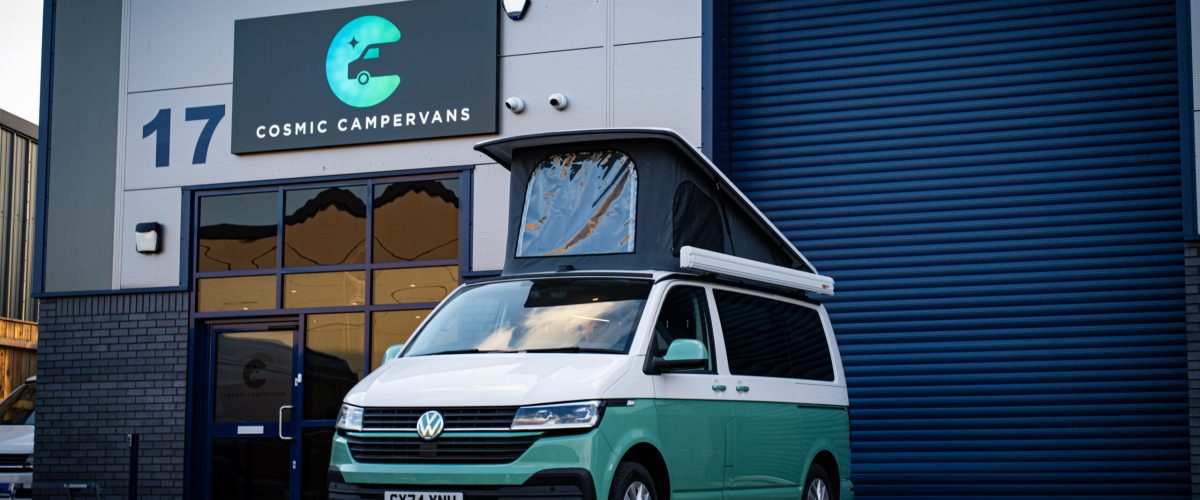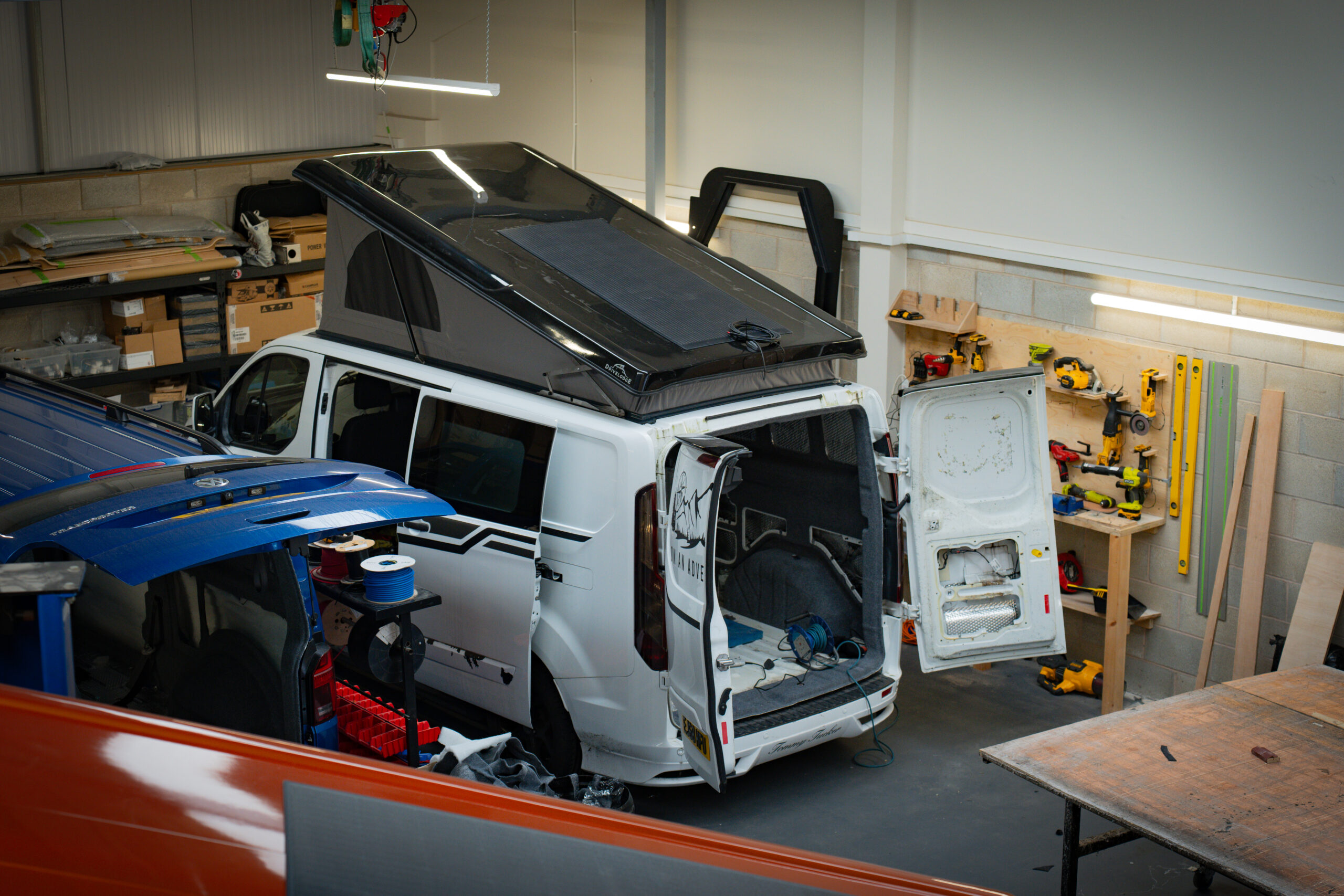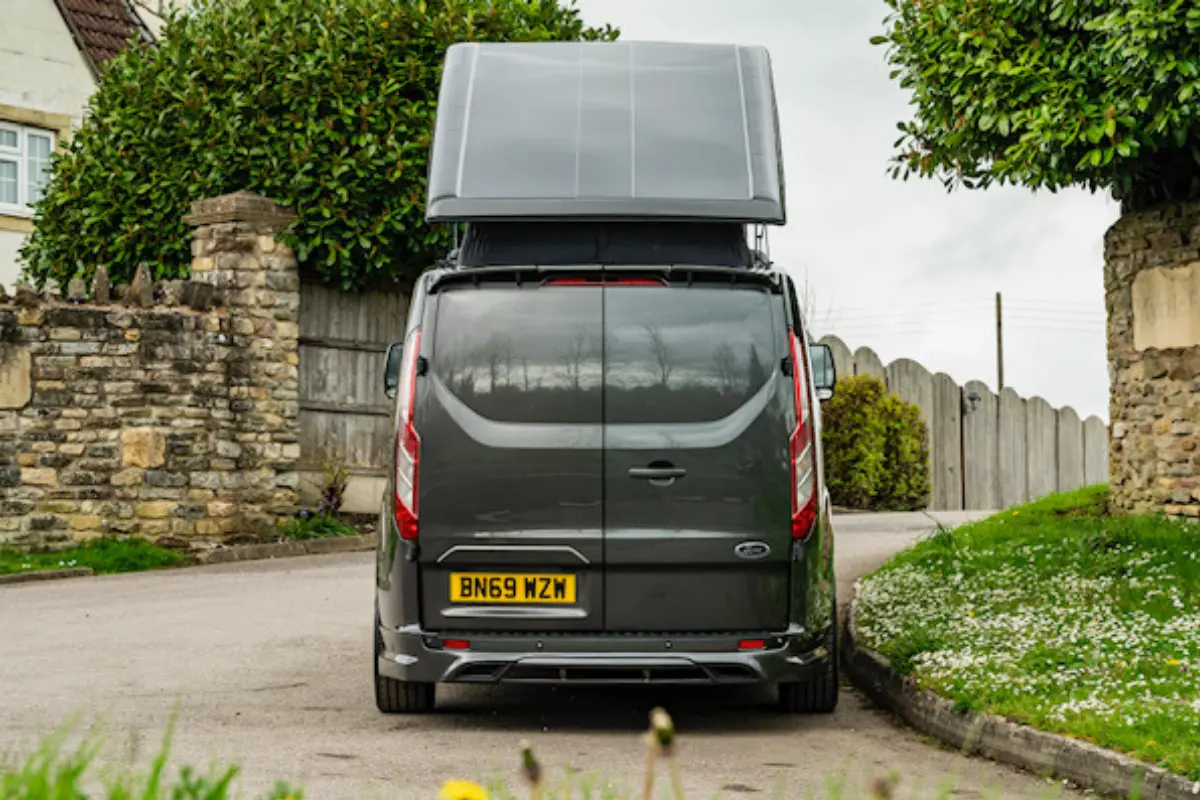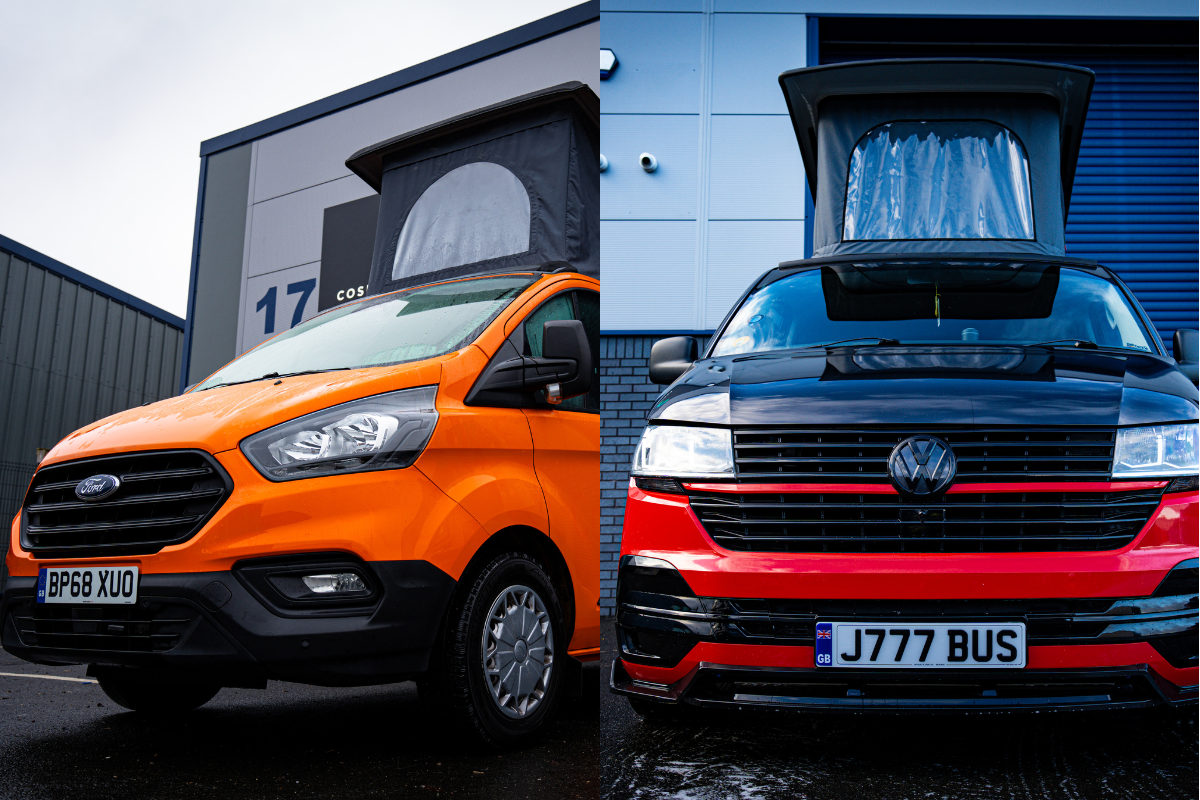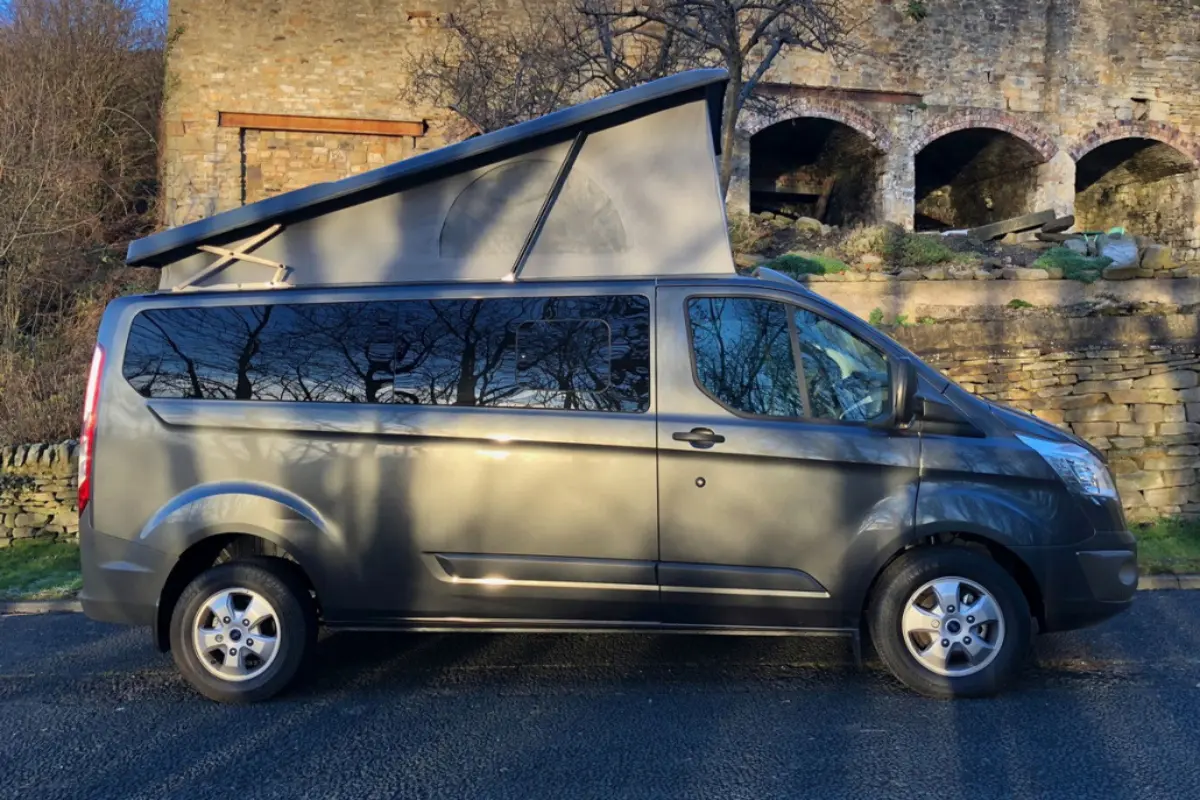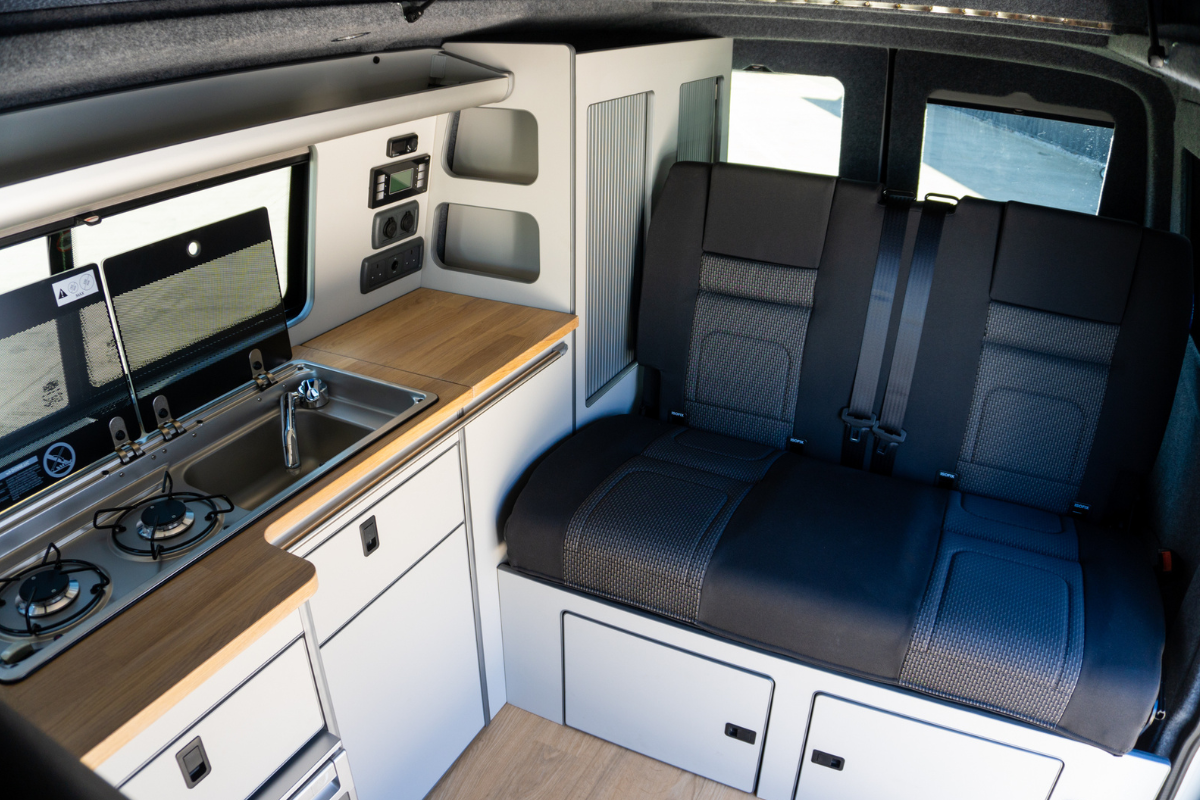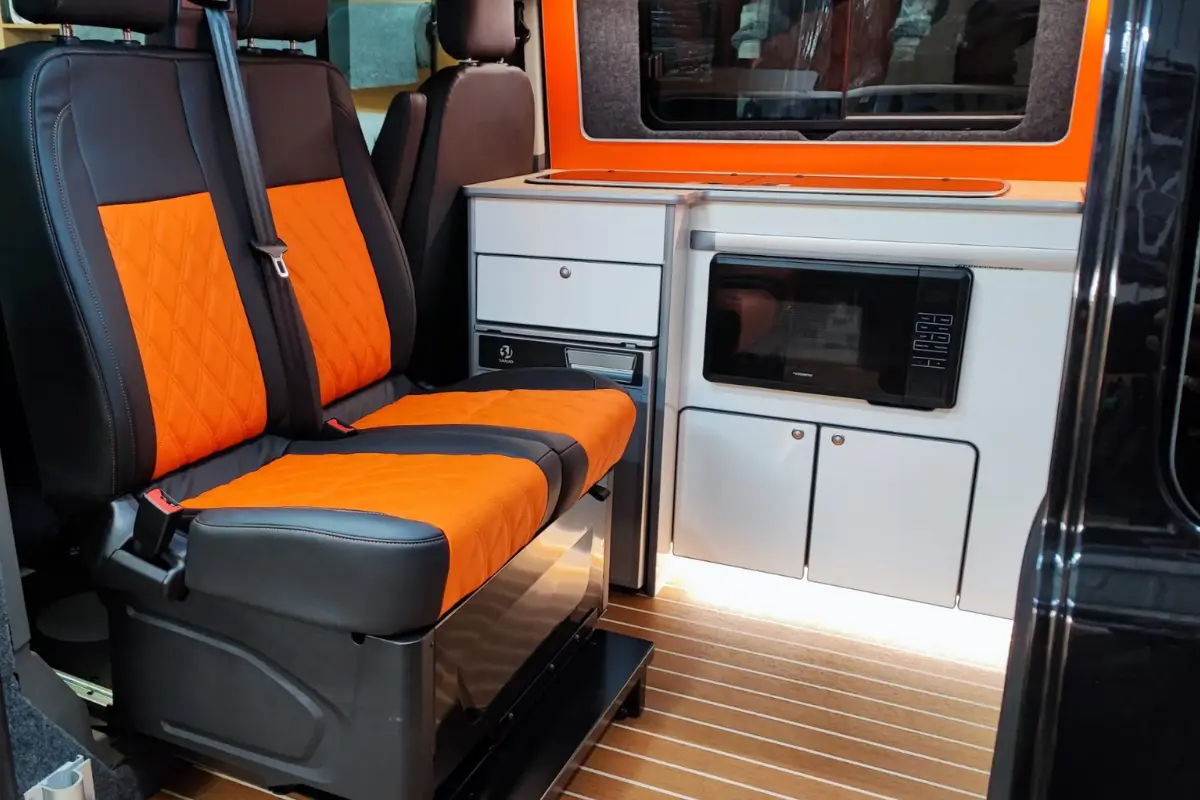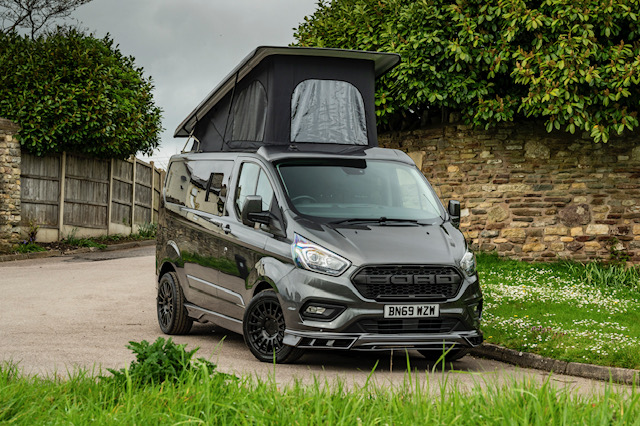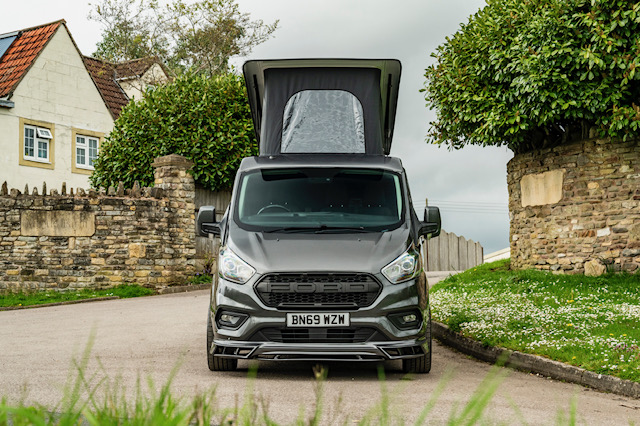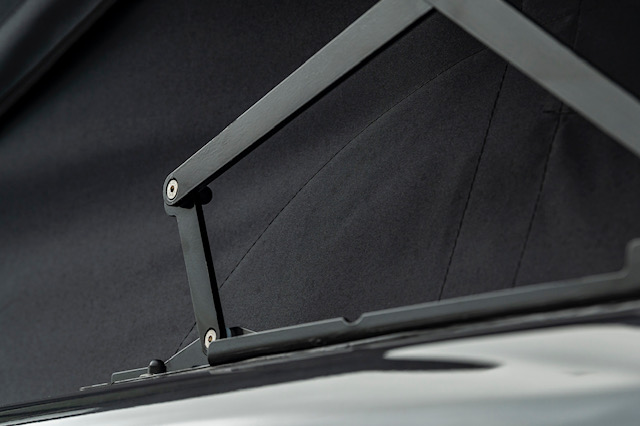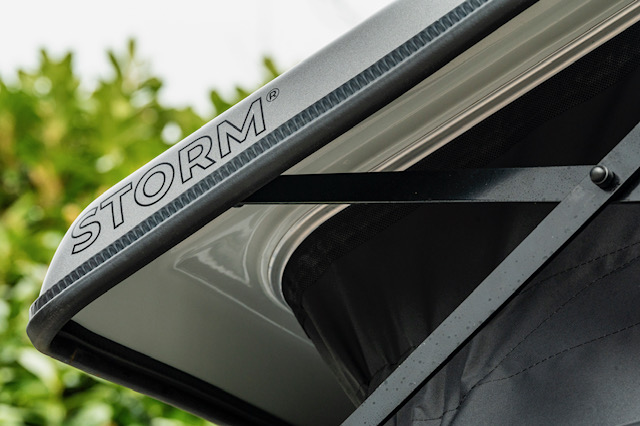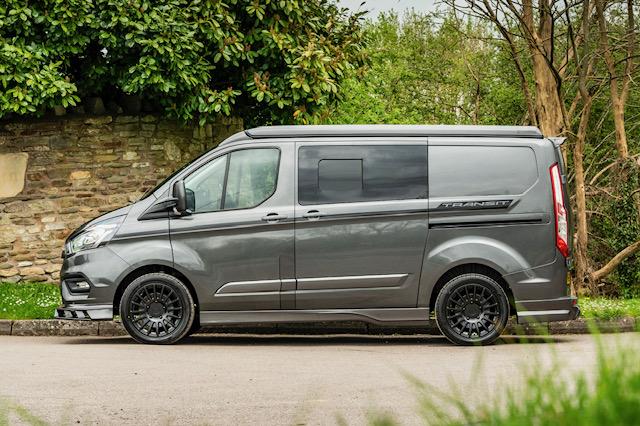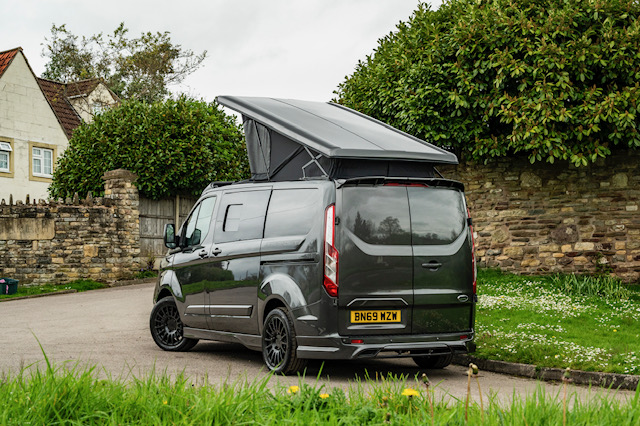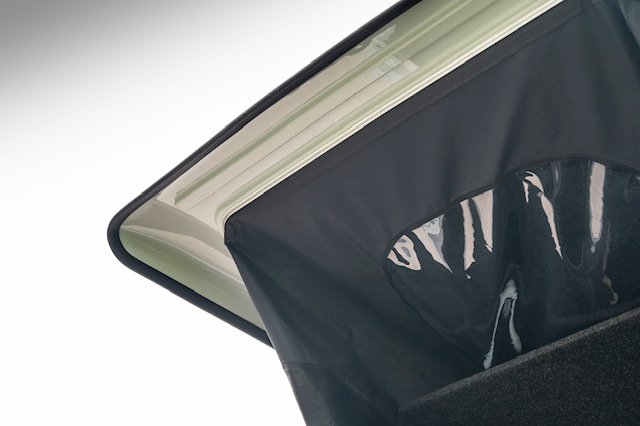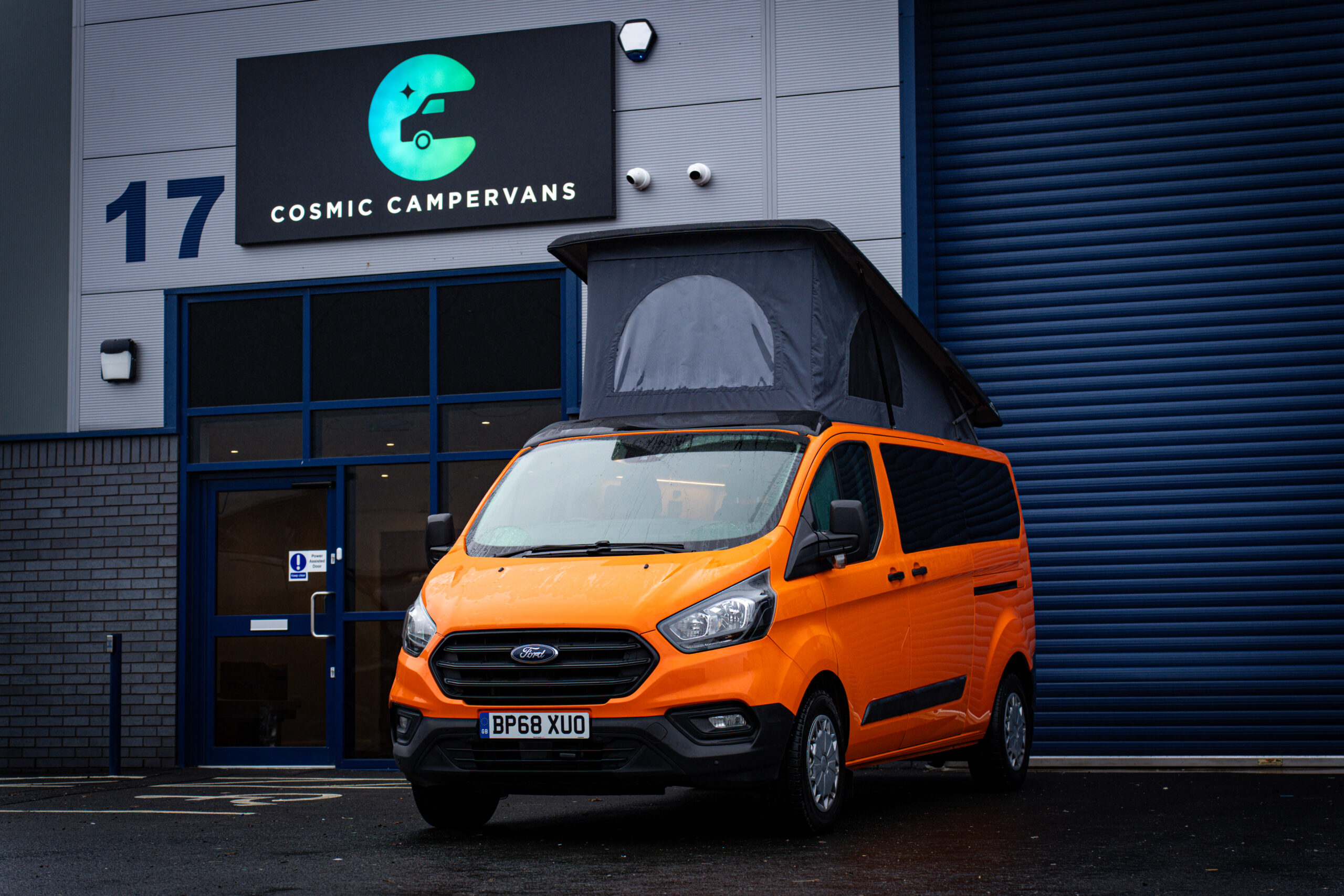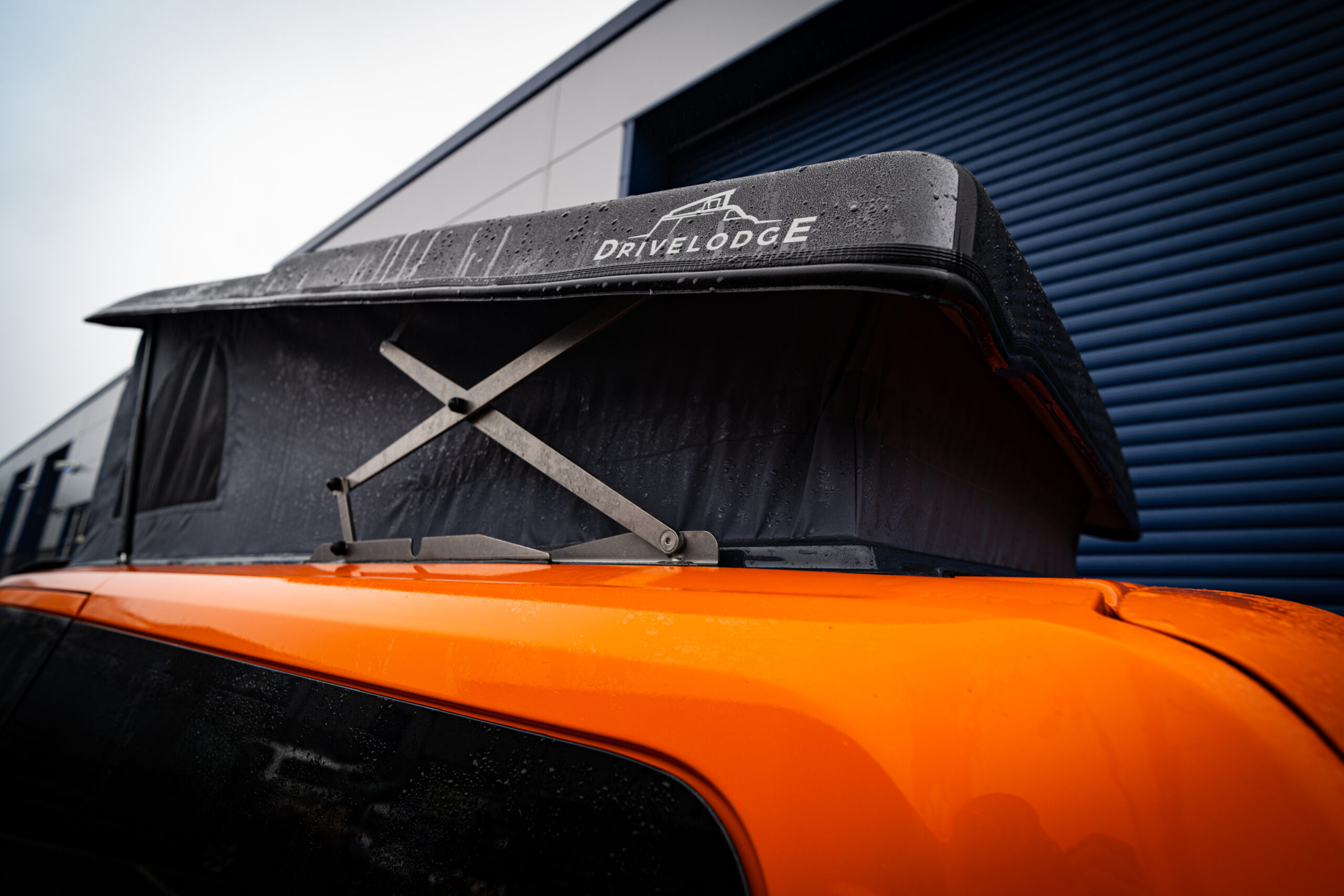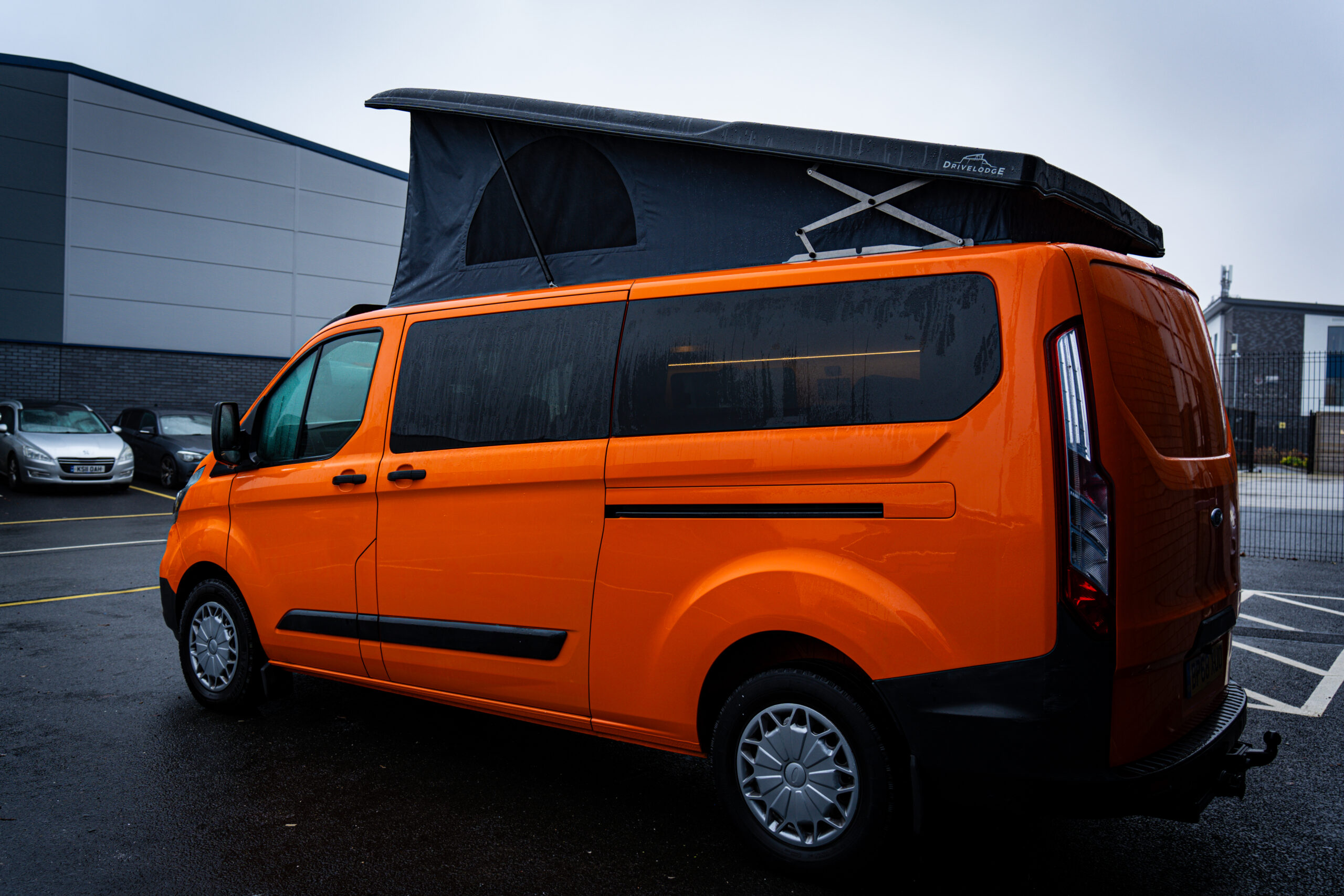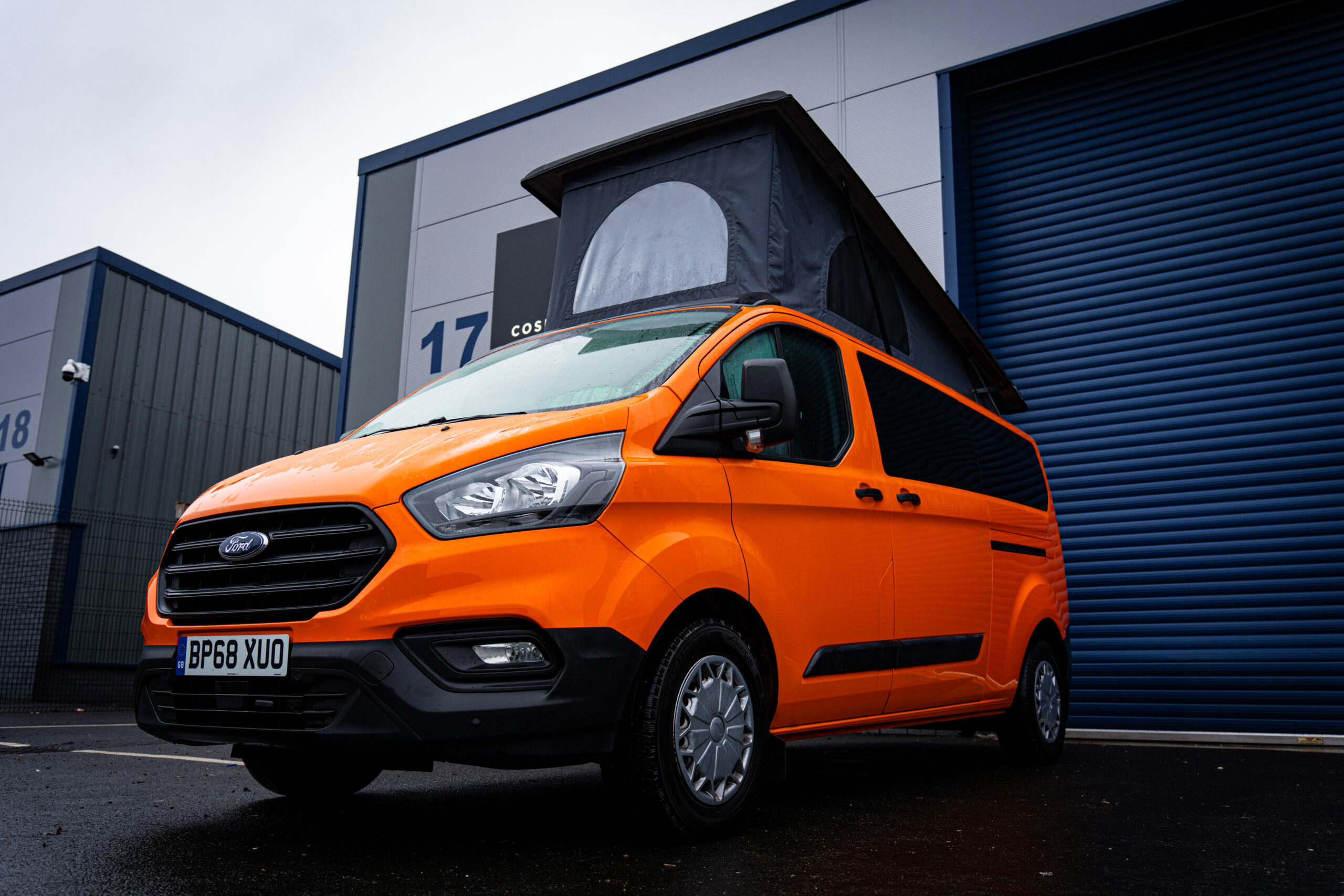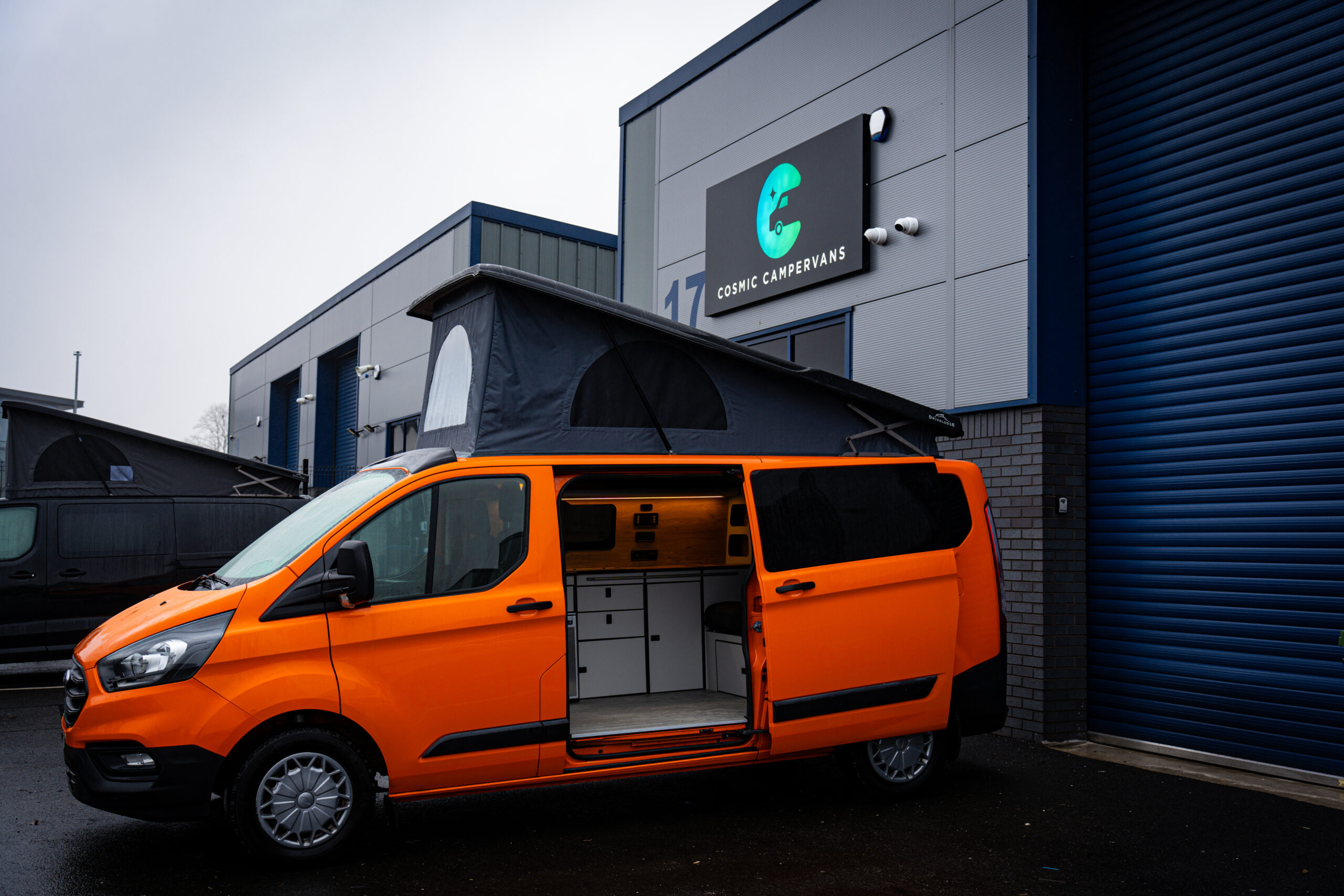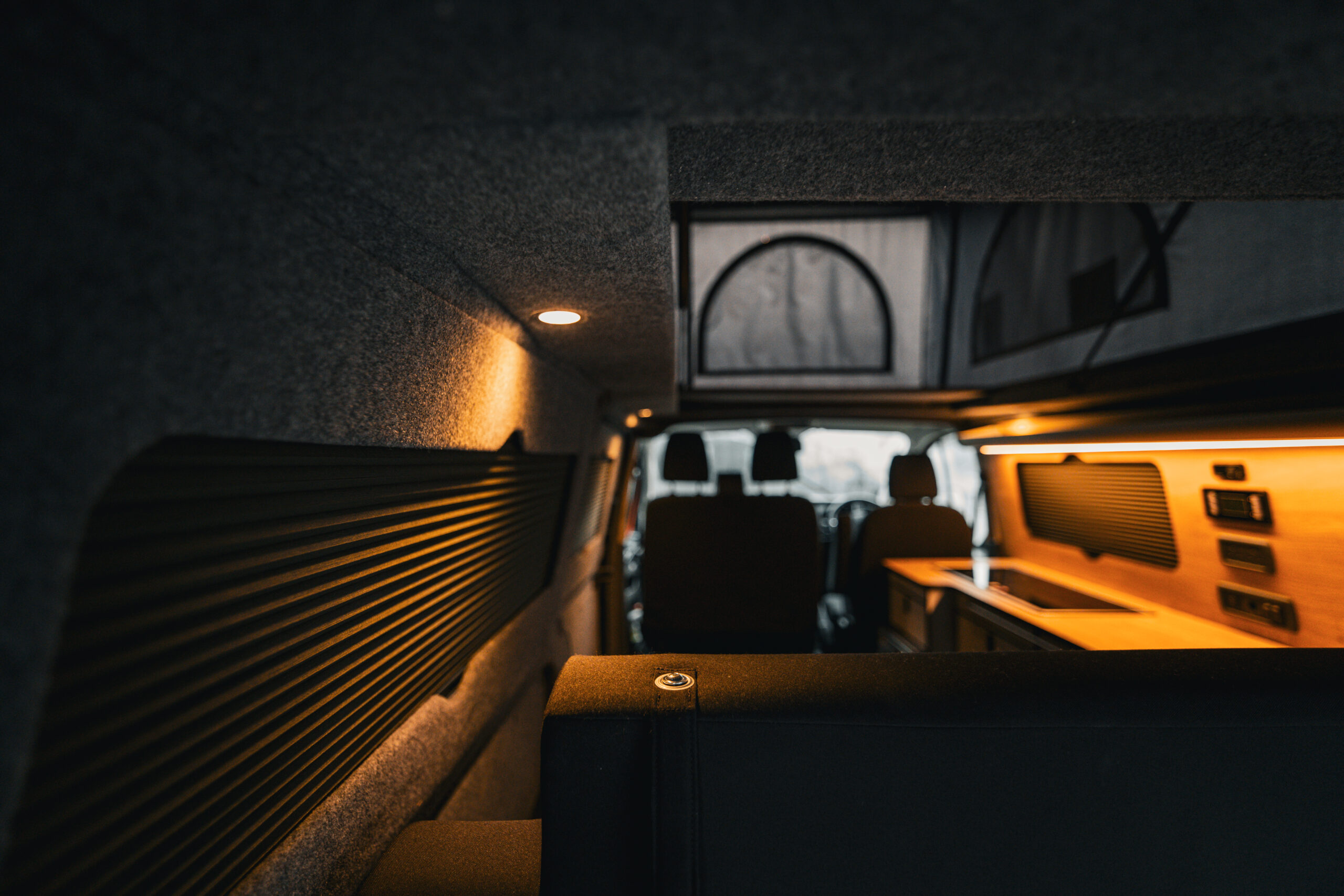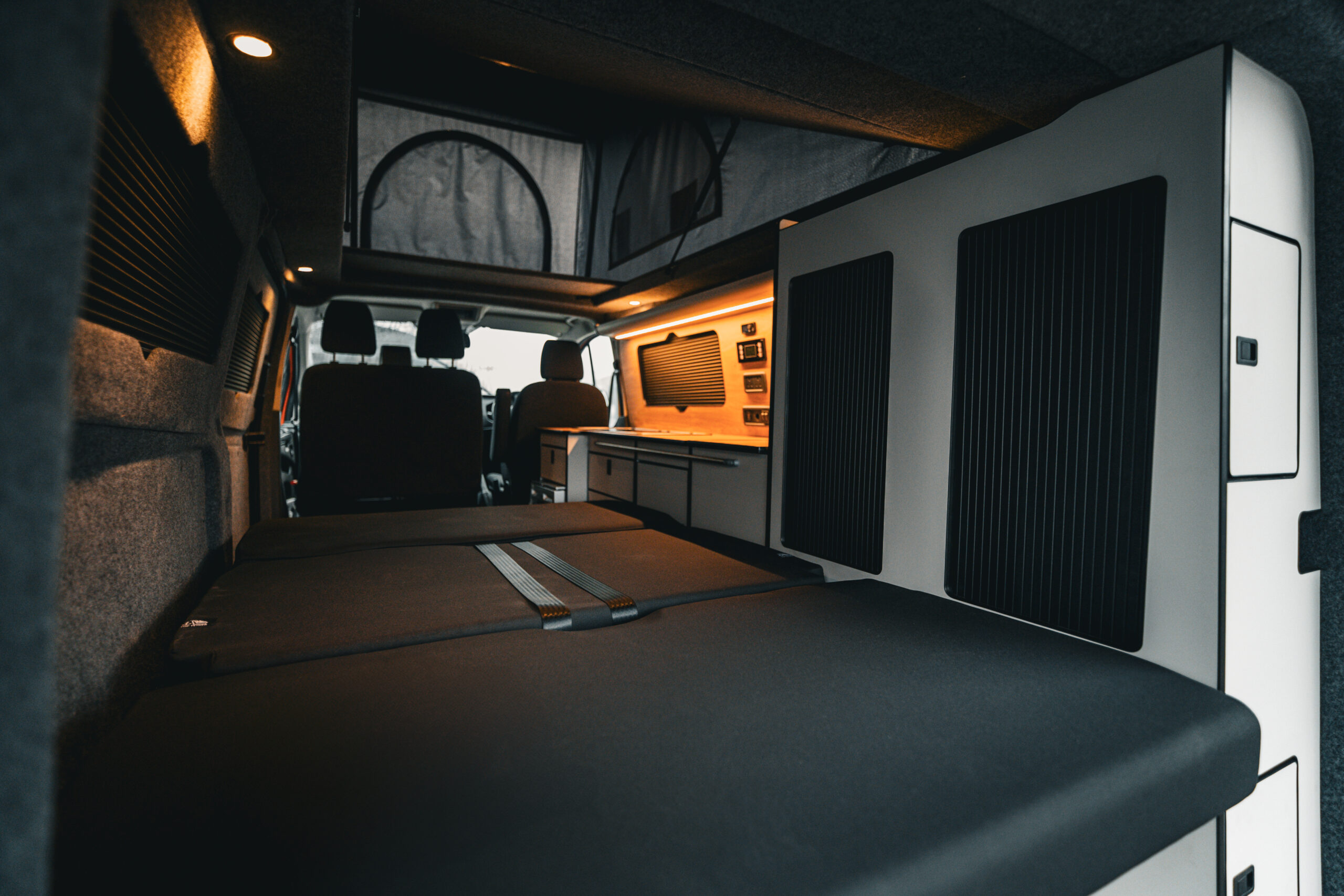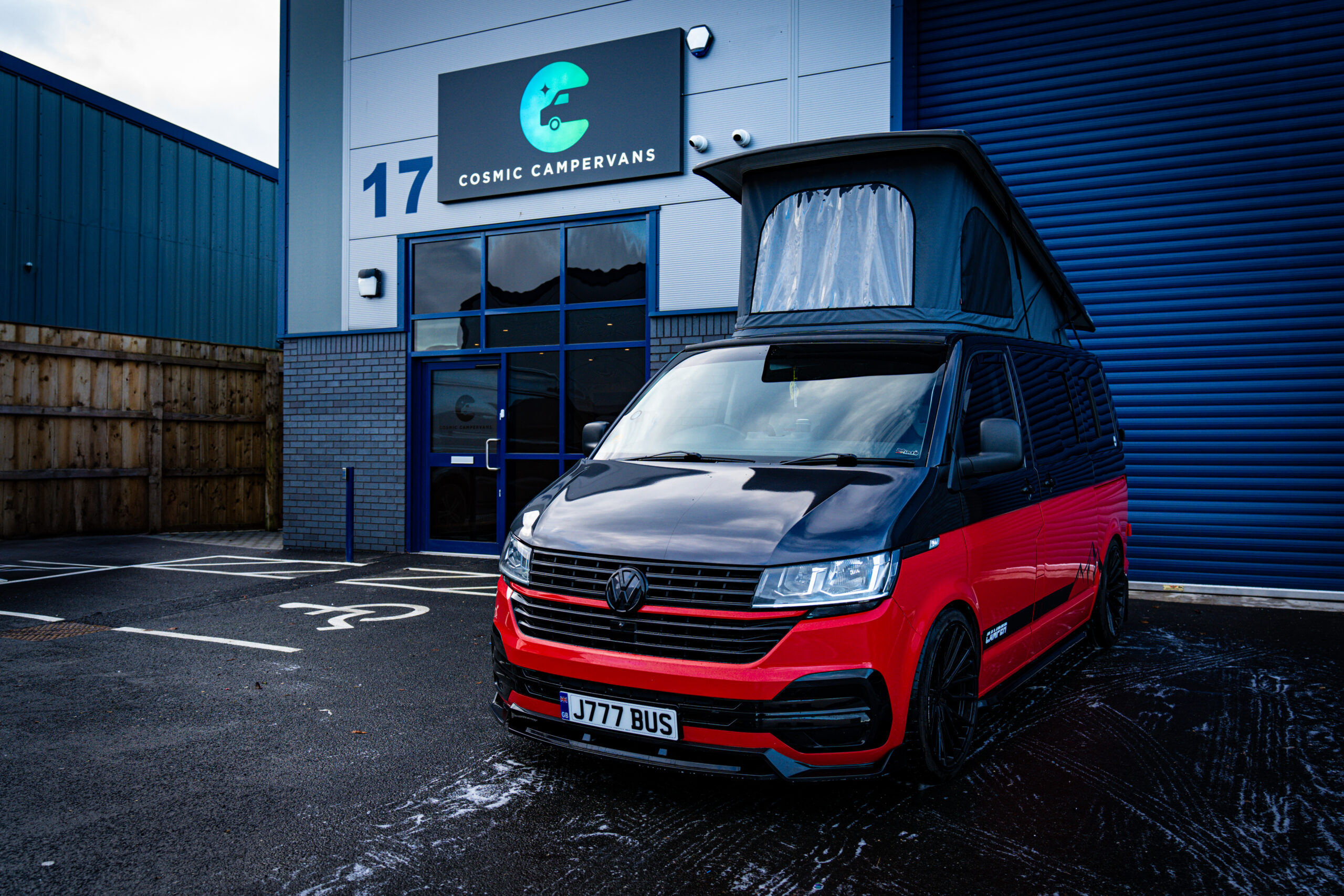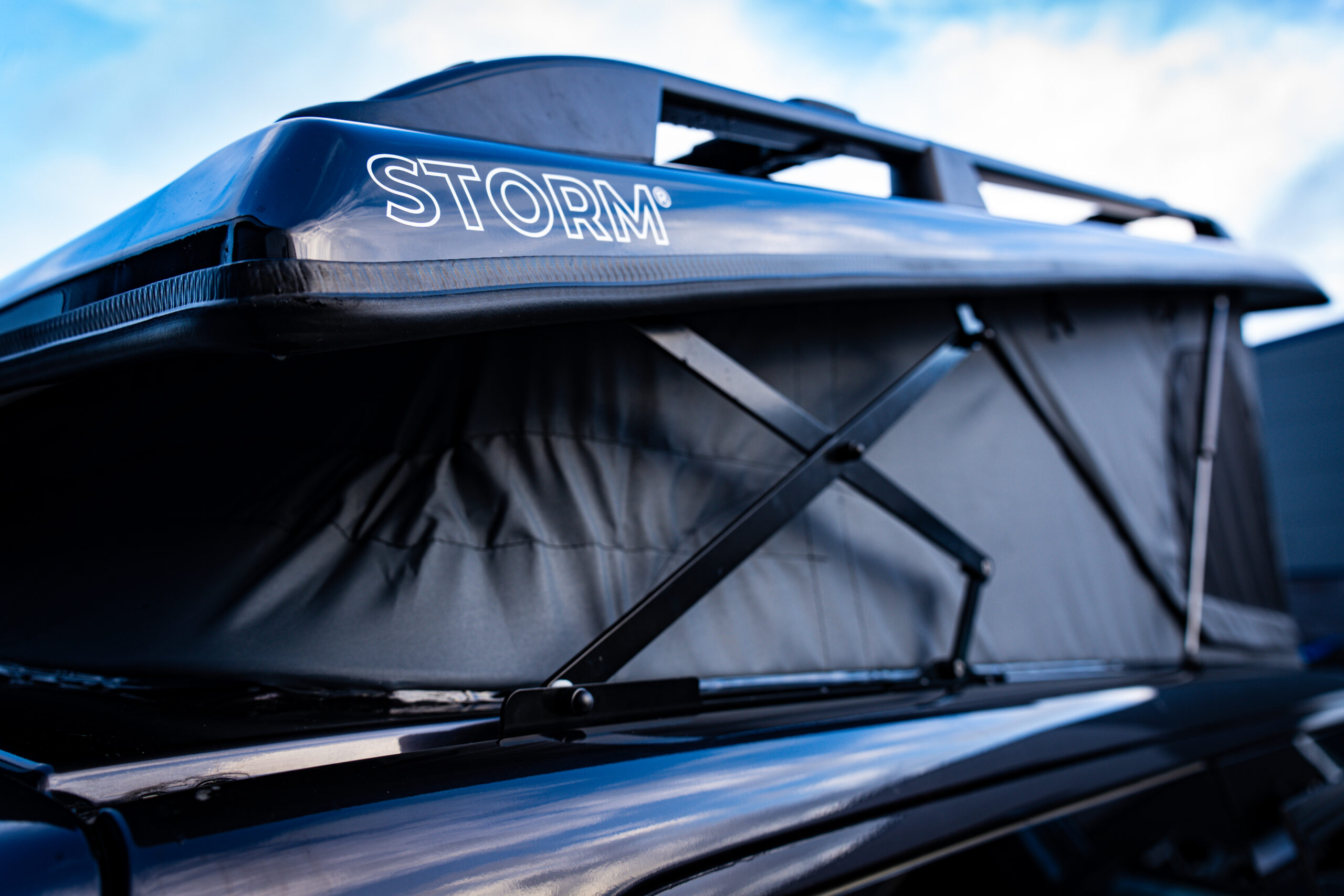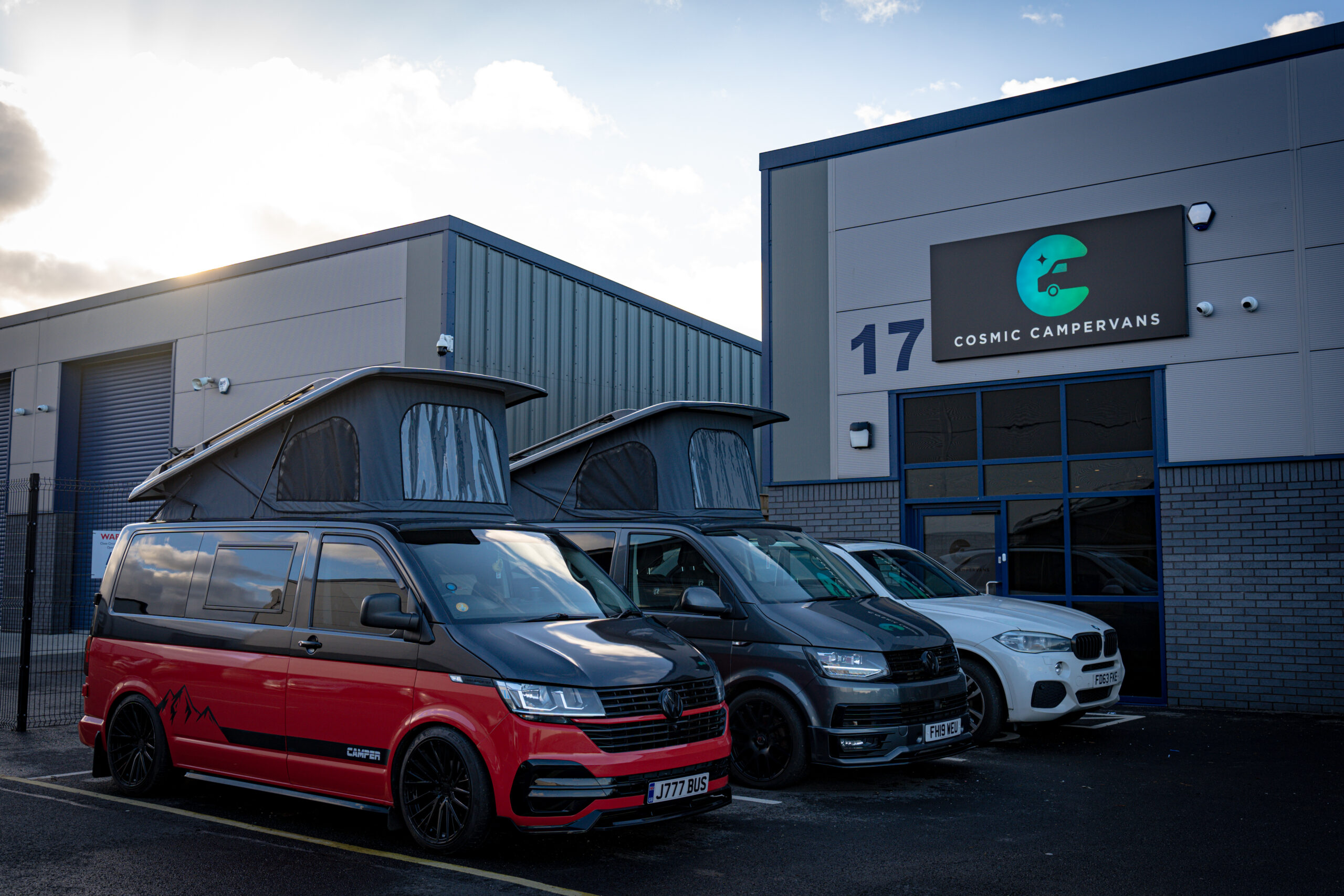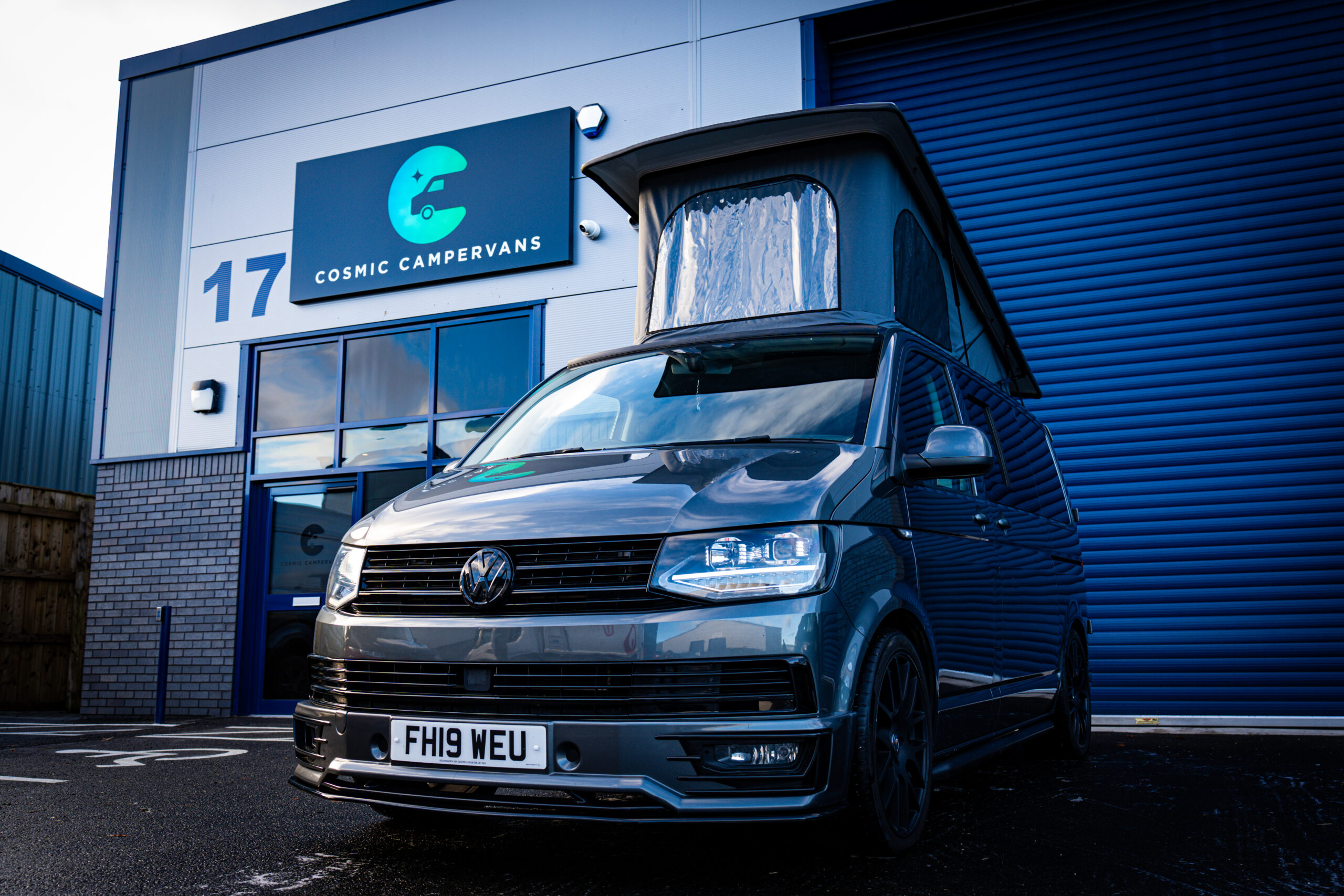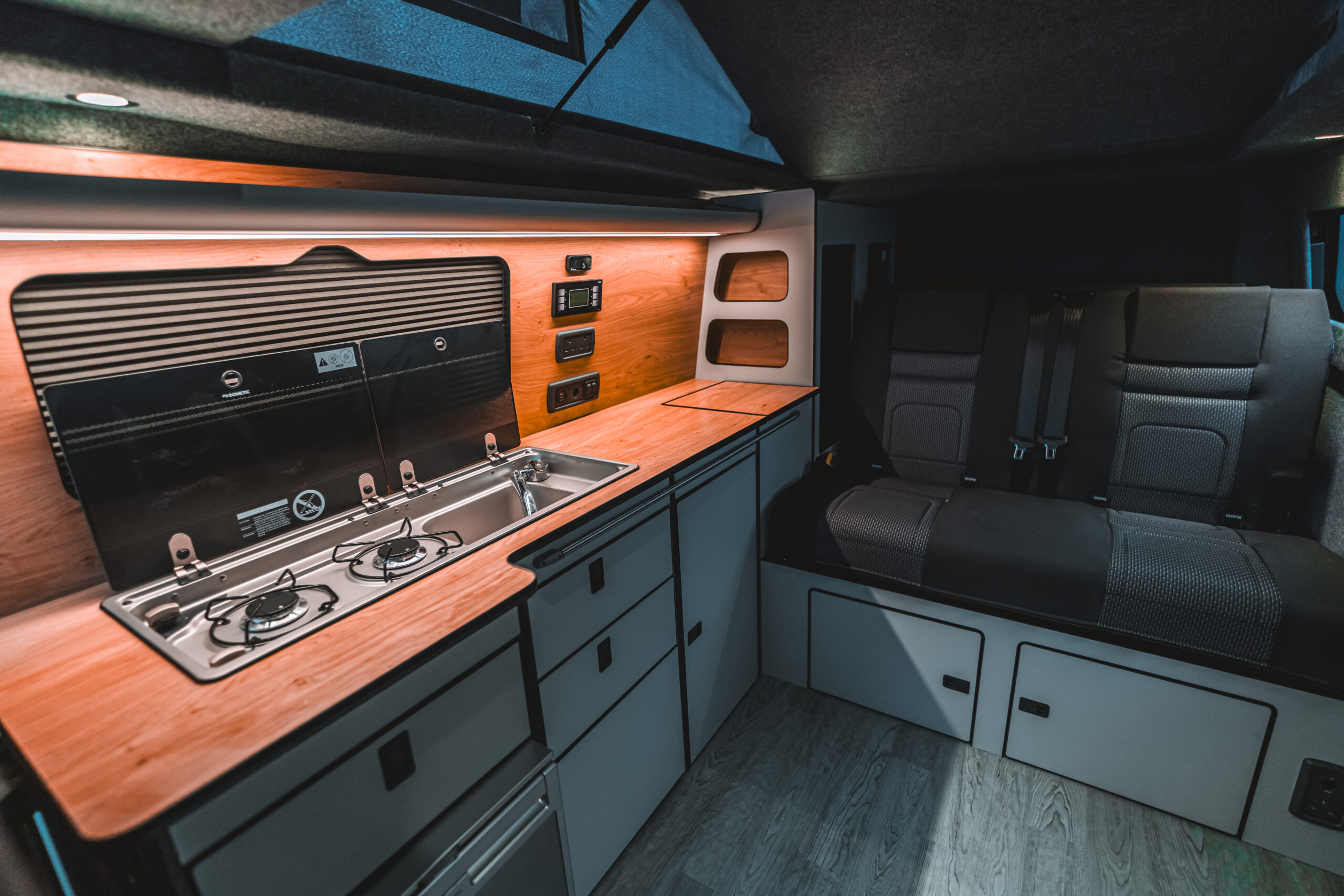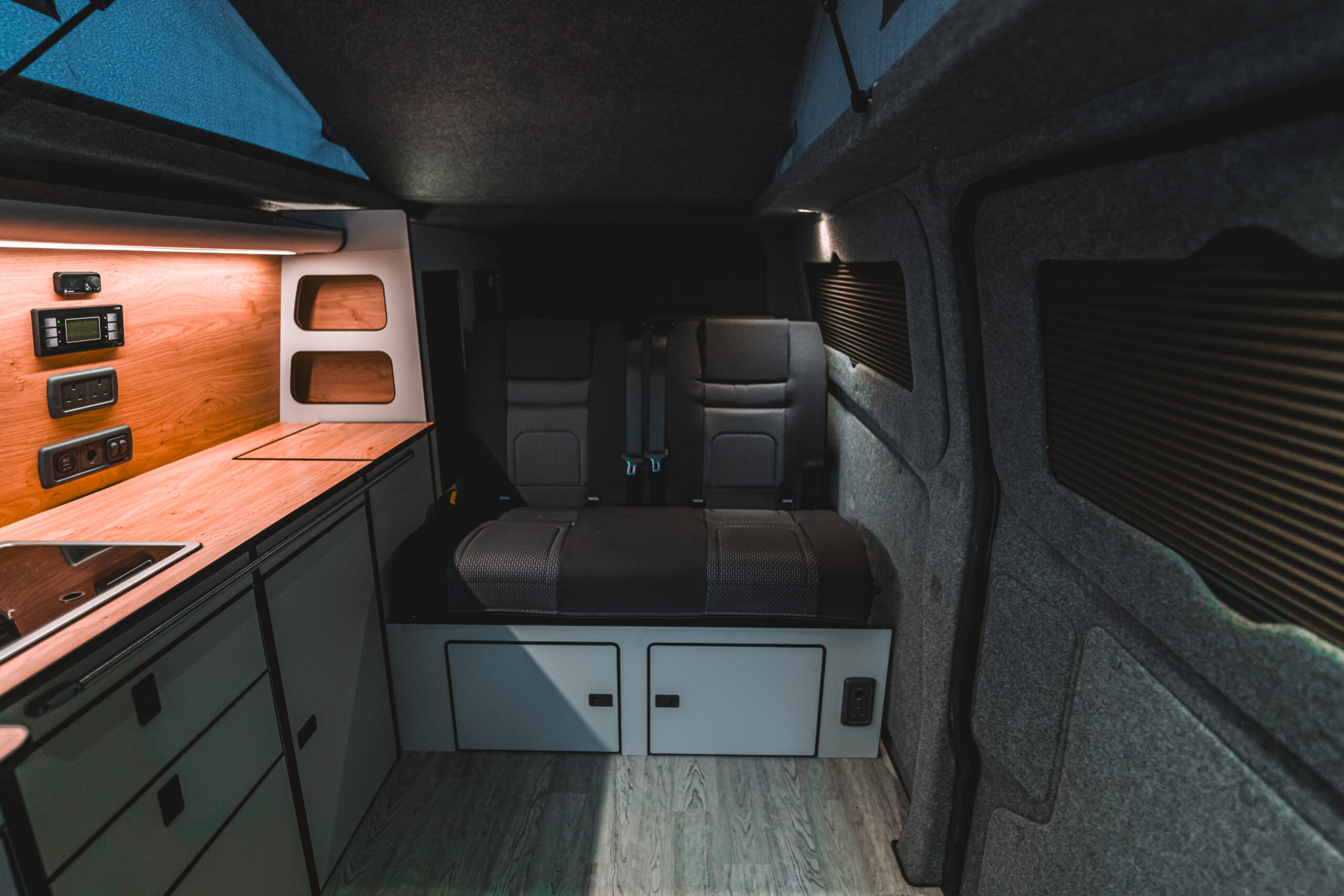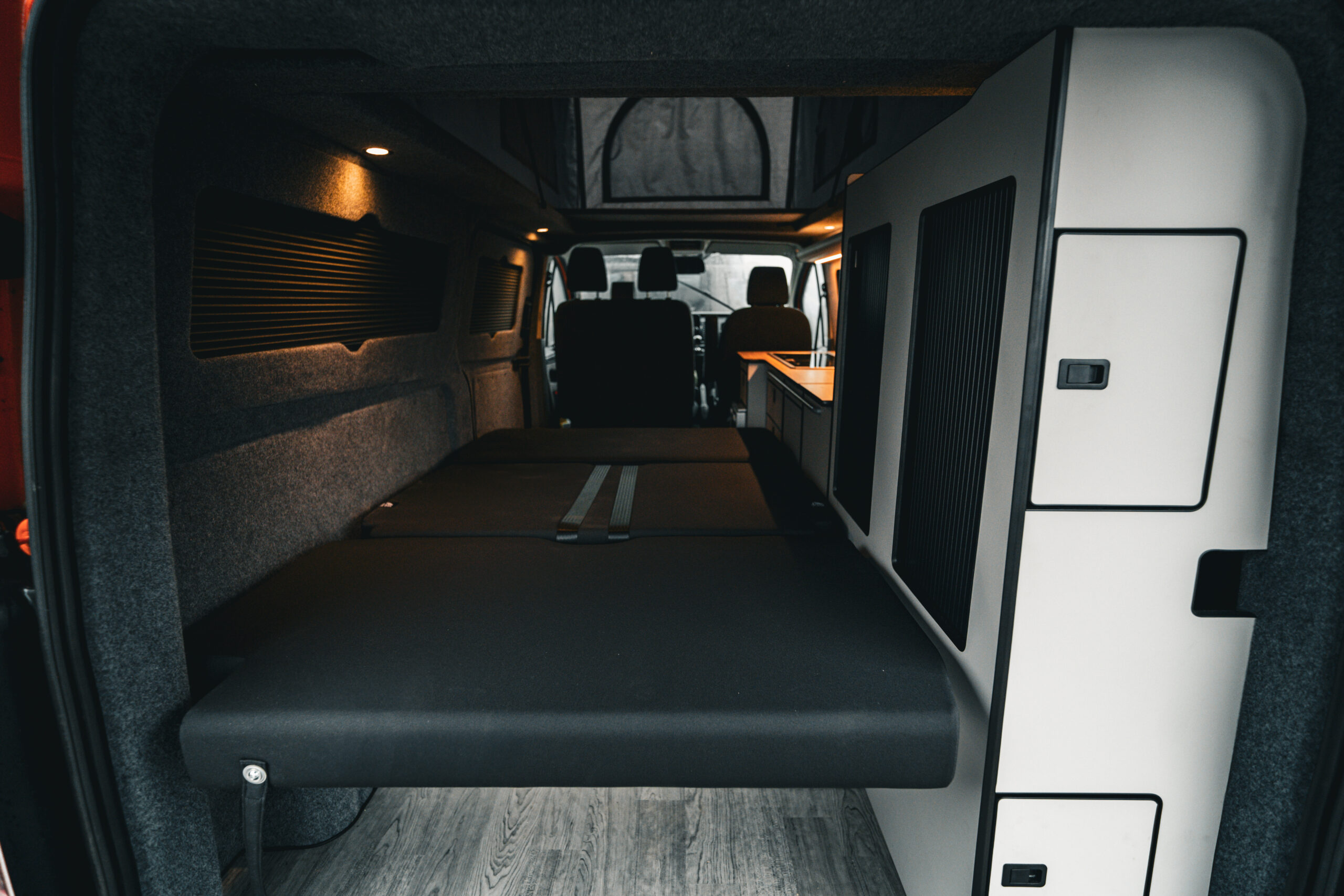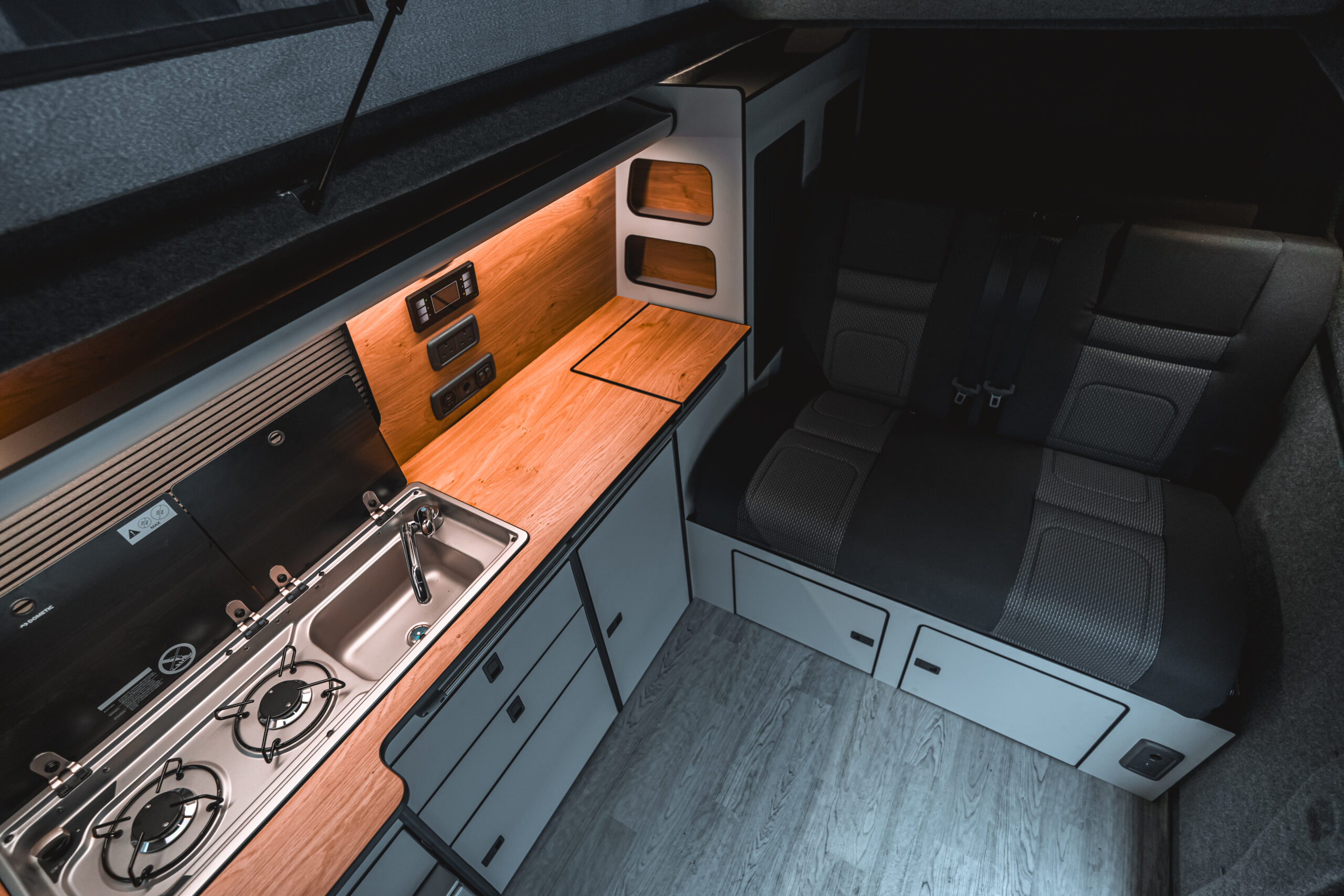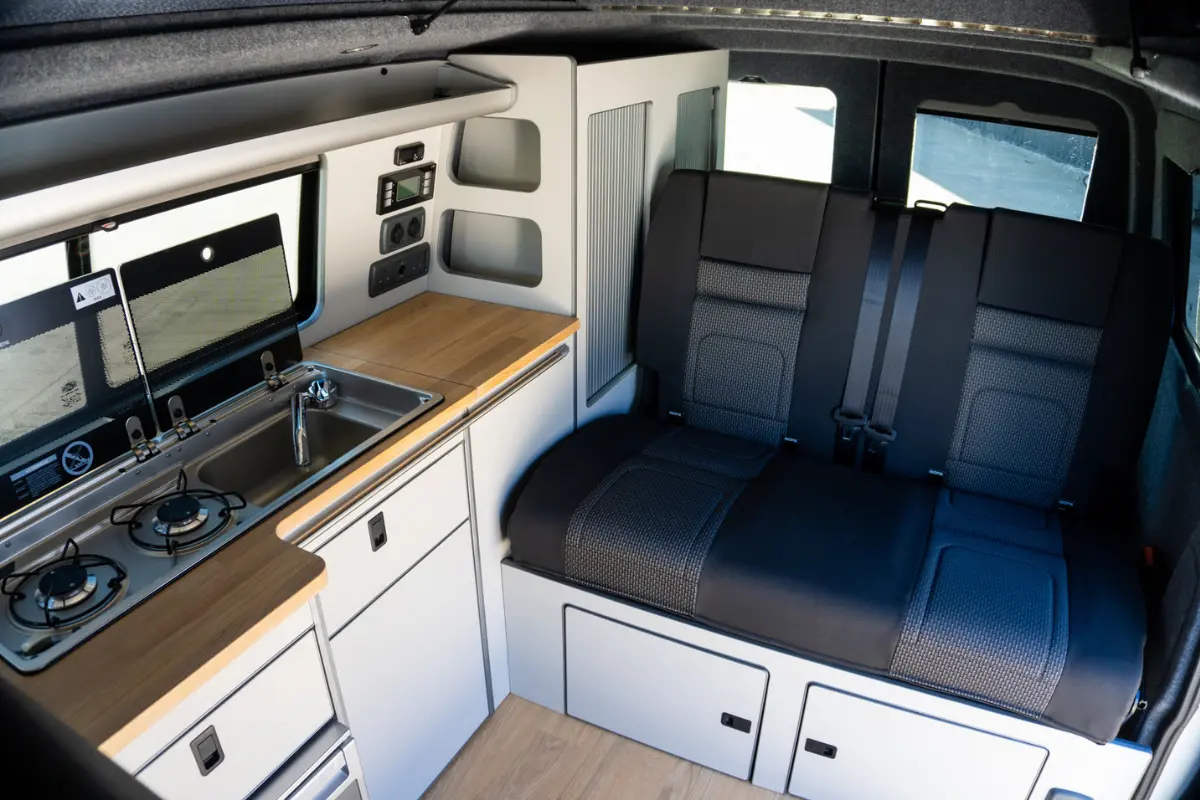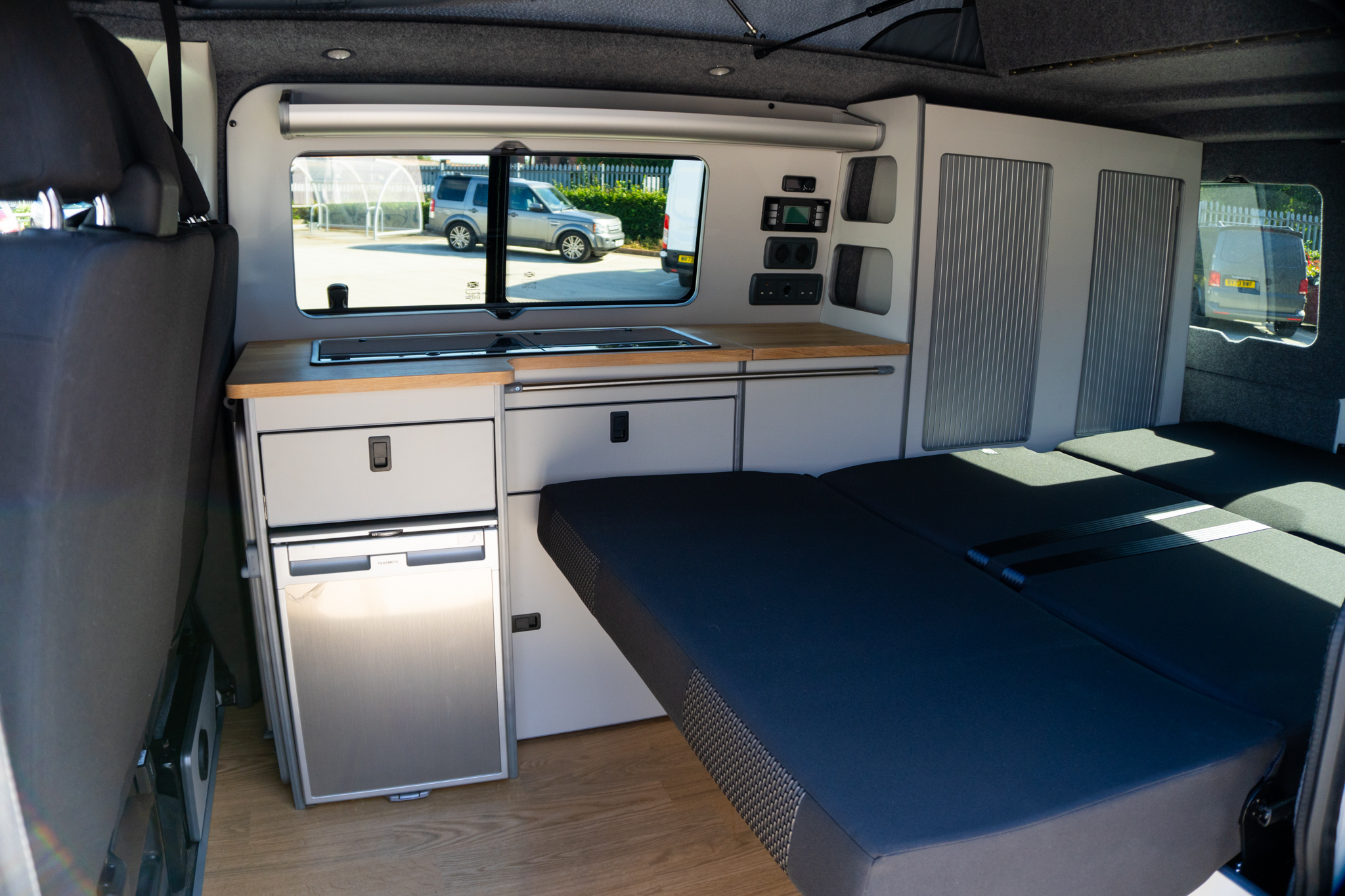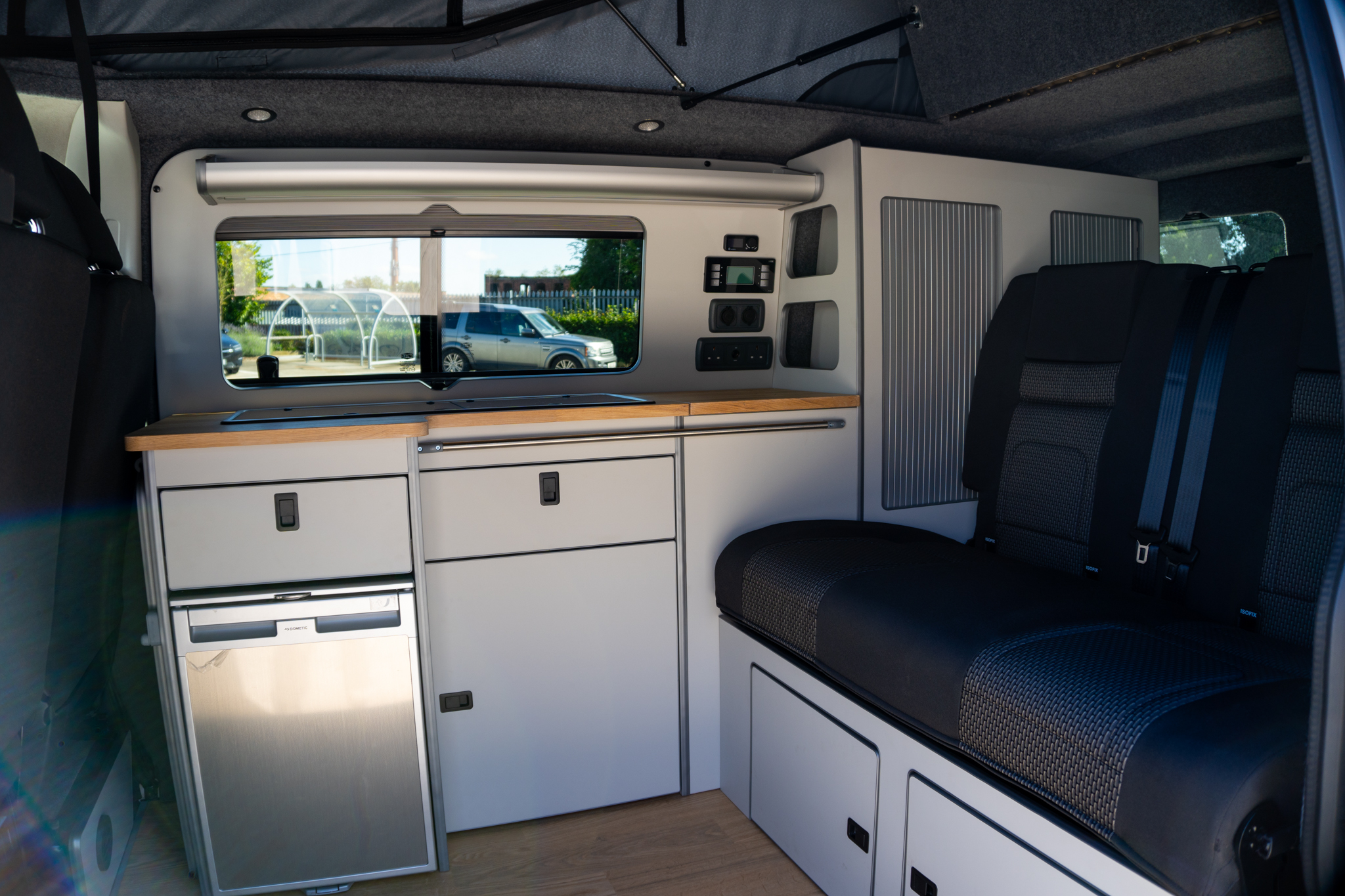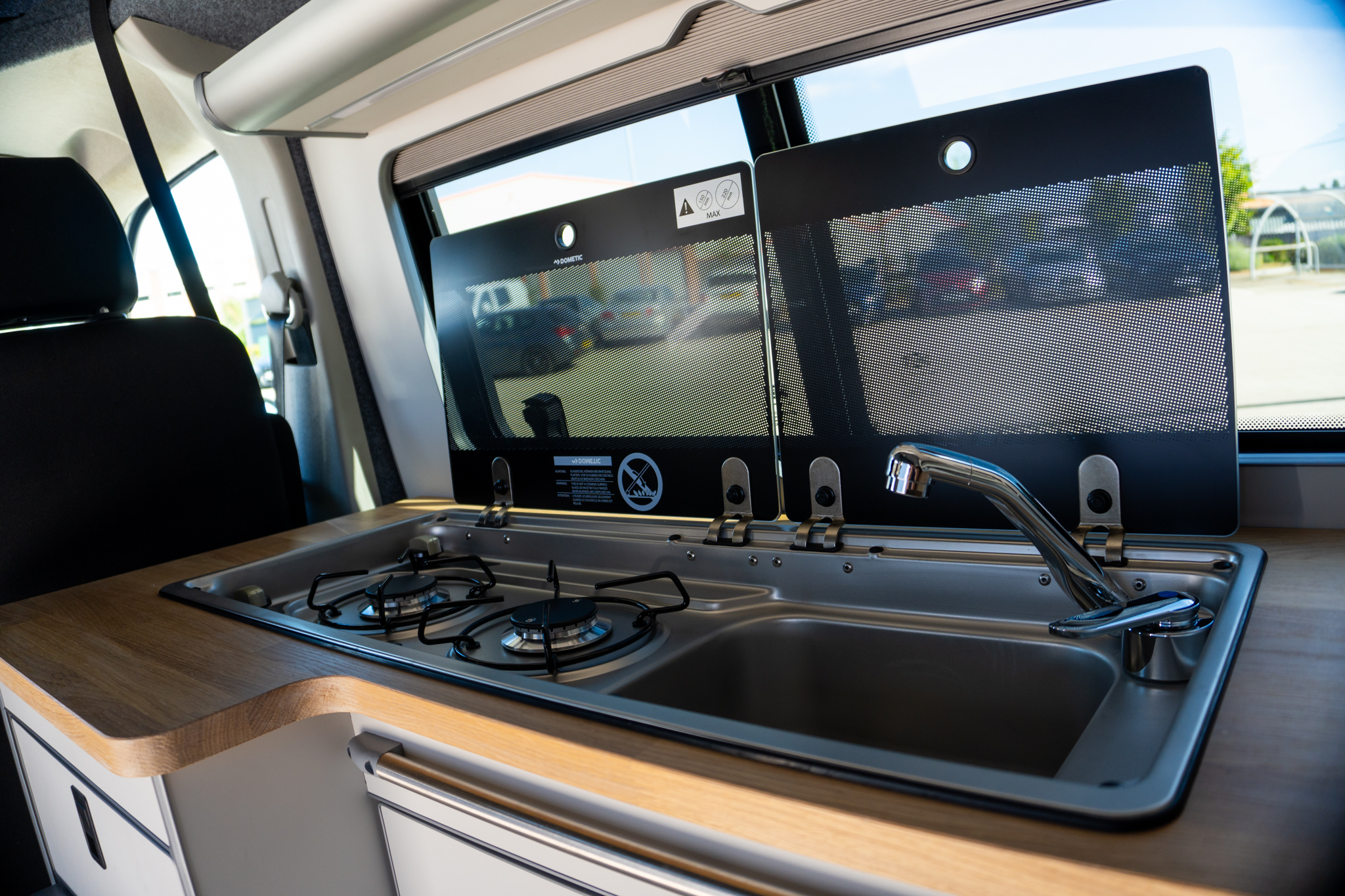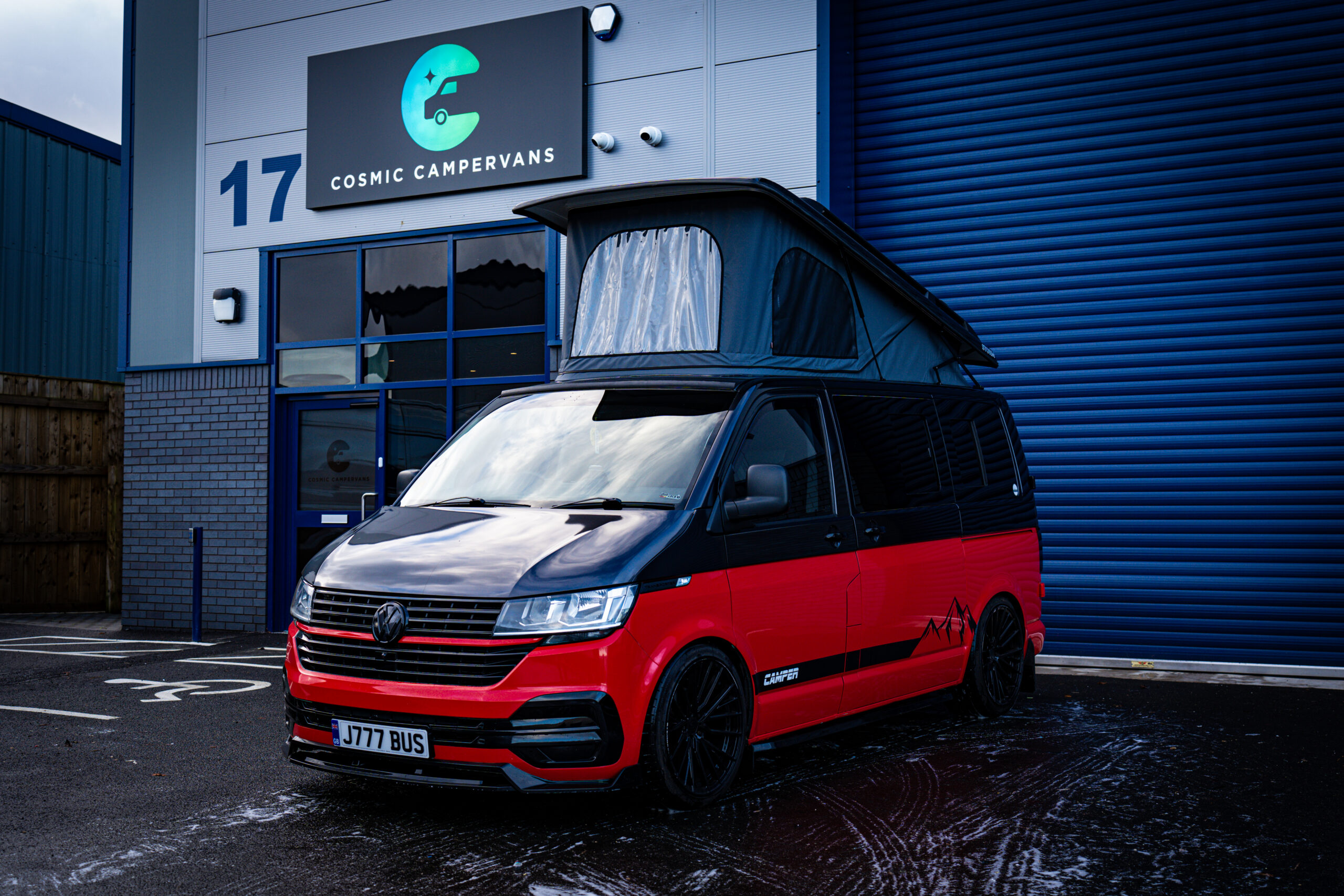VW Transporter Models: T28 vs T30 vs T32
What you need to know about it.
At Cosmic, I’m often asked which VW Transporter model makes the best base for a pop-top camper. In the UK camper scene, the VW Transporter’s T28, T30, and T32 designations are crucial details but they can be confusing for first-timers.
My name is Dario, and after years of converting vans into campers, I’ve learned the ins and outs of these models. In this guide, I’ll break down the differences between the T28, T30, and T32, and share which is optimal for your campervan conversion needs.
We’ll cover payload capacities, how each handles the extra weight of a conversion (especially a pop-top roof), driving comfort and fuel economy, engine (BHP) options, long-term reliability, resale value, and practical recommendations for various budgets.
Whether you’re building a weekend escape van or a full-fledged home-on-wheels, choosing the right base van is a critical first step. Let’s dive into the comparison so you can make an informed decision with confidence.
So, What Does T28, T30, and T32 Even Mean?
What do “T28”, “T30”, and “T32” mean? These codes are VW’s way of indicating the Transporter’s weight class.
The number refers to the van’s approximate gross vehicle weight rating in tonnes. In simple terms, it’s the maximum total weight the van can safely carry (van + passengers + cargo) as certified by the manufacturer.
For example, “T28” means a 2.8-tonne maximum gross weight, T30 is 3.0 tonnes, and T32 is 3.2 tonnes. In kilograms, that’s roughly 2,800 kg, 3,000 kg, and 3,200 kg respectively.
Does that mean the models are totally different?
No. All three, T28, T30, and T32 are VW Transporter variants that share the same basic body and chassis design. They are not different generations or body styles, but rather different weight specifications of the same van model.
Is this different from the Gross Vehicle Weight?
It’s important to distinguish payload capacity from gross vehicle weight (GVW). GVW is the total allowed weight, while payload is how much you can carry in the van after accounting for the van’s own weight.
To put it practically: if your empty van weighs ~1.9 — 2.0 tonnes (common for a Transporter), a T28’s max 2.8t rating leaves roughly 800 kg for everything you add, conversion materials, water, fuel, passengers, luggage, and so on.
A T32, with ~3.2t gross, gives you more like 1.2t of payload. That difference can determine whether your camper stays within legal weight limits once fully kitted out.
Why does this matter for conversions?
Exceeding the weight limit is both unsafe and illegal. It can lead to handling problems and issues at MOT/inspection or even invalidate your insurance.
So, understanding these ratings helps you pick a base van that can safely handle the camper build you plan.
Want to Make Van Camping Easier?
Upgrade your VW Transporter with plumbing, carpeting and heating.
T28 vs T30 vs T32 – Detailed Comparison Table
To give a clear overview, below is a comparison of key factors for the T28, T30, and T32 Transporter models. This table encapsulates payload, suspension, MOT class, conversion suitability, insurance considerations, and typical cost differences:
| Factor | T28 (2.8 t GVW) | T30 (3.0 t GVW) | T32 (3.2 t GVW) |
| Gross Vehicle Weight | 2,800 kg (2.8 tonnes) | 3,000 kg (3.0 tonnes) | 3,200 kg (3.2 tonnes) |
| Typical Payload | ~800–885 kg (lowest) | ~990–1,100 kg (medium) | ~1,100–1,280 kg(highest) |
| Suspension & Handling | Light-duty springs (softer ride when empty; may sag if at max load) | Medium-duty springs (balanced ride) | Heavy-duty springs (stiffer when empty; built for heavy loads) |
| MOT Class (UK) | Class 4 (standard car/light van MOT) | Class 4 (standard MOT) – 3,000 kg is below Class 7 threshold | Class 7 (goods vehicle MOT) if left as van; Class 4 if registered as a camper (motor caravan) |
| Conversion Suitability | Suited for lighter conversions (basic camper interior, one/two travelers). Must watch weight carefully to avoid overloading. | Suited for most standard camper conversions (kitchens, pop-top, seating for family) with a comfortable safety margin. | Ideal for heavy or full-feature conversions (fridge, cabinets, heater, water tanks, etc.) and/or traveling with 4+ people. Plenty of payload headroom for gear. |
| Insurance Factors | Standard camper insurance (ensure not overloaded). Lower GVW means less risk of class change. | Standard insurance. Check that loaded weight stays under 3.0t limit. | May require Class 7 MOT if not reclassified. High GVW reduces risk of accidental overloading (important for insurance validity). |
| Cost & Value | Generally the least expensive to buy (used or new). Slightly lower demand, but fine if weight needs are modest. | Mid-range cost. Very common and popular choice for converters, so lots on the market. Good balance of price and capability. | Tends to cost more (new or used) due to higher spec and demand. Often higher trim levels. Strong resale value. |
Payload and Weight Capacity Considerations
One of the first things I evaluate in a base van is how much weight it can carry after conversion.
Campervan builds add significant weight: think of plywood floors, cabinetry, a bed or rock’n’roll seat, a kitchenette with stove and maybe a fridge, water tanks, additional batteries, and the pop-top roof itself.
All these can easily add several hundred kilos. Then include passengers (each adult is ~70–90 kg), luggage, food, and outdoor gear. It adds up fast.
Things to consider for the T28 (2800 kg GVW)
With roughly ~800–880 kg payload to work with, a T28 can handle a basic camper fit-out, but you’ll need to be mindful of weight at every step.
It’s very doable for a simple two-berth setup (e.g. a small cabinet, bed, and pop-top) especially if you pack light. However, it’s easier to accidentally overload a T28 once you’ve filled the water tank, brought along camping chairs, an awning, and a couple of adults.
In my experience, many full camper conversions (with cabinetry, fridge, etc.) plus people will push a T28 close to its limit. For example, one typical side-kitchen conversion with an awning and bikes came in around 2,640 kg empty; add two passengers and you’re at ~2,800 kg – essentially at the T28’s max.
This leaves virtually no spare capacity for extra cargo or upgrades. If you’re converting a T28, you must prioritise lightweight materials and minimalism. It’s great for weekenders or day vans, but for extended trips, you’ll be packing very carefully.
Things to consider for the T30 (3000 kg GVW)
The T30 offers about 1,000+ kg of payload, a significant step up. This is usually sufficient for a classic campervan conversion with a pop-top and full interior.
In fact, T30 is arguably the most popular choice for camper conversions in the UK, as it provides a comfortable safety margin on weight without the cost of the T32.
With a T30, you can install a typical conversion (cabinets, bed/seat, cooking area, storage, and a pop-top) and still have a few hundred kilos to spare for passengers and luggage.
The example earlier of a 2.64t loaded camper would sit about 360 kg under the T30’s limit, which is a nice buffer for extras. For most first-time converters, I usually recommend aiming for a T30 if possible it hits a sweet spot in capacity versus cost.
You still need to mind what you add, but you’re less likely to hit the ceiling. Also, note that at exactly 3.0 tonnes GVW, the T30 stays within the lighter vehicle category for MOT (Class 4) and avoids any goods vehicle testing complications (more on that later).
Things to consider for the T32 (3200 kg GVW)
The T32 is the heavyweight champ, with roughly 1.1–1.28 tonnes of payload capacity. This gives enormous freedom for conversion.
You can practically throw the kitchen sink at it quite literally installing a larger water tank, a full kitchenette, heavy duty camper interior, and an onboard toilet.
Whilst still being able to comfortably carry bikes, surfboards, or other gear. If you envision long trips with a family of four and lots of equipment, the T32 ensures you won’t stress about weight.
In the UK, a 3.2t GVW is still within the standard driving licence limit (under 3.5t), so no special licence needed. The main consideration with T32 is that you might be paying for capacity you don’t fully use if your build is light.
You will need to consider the pop-top roof weight:
A pop-top itself doesn’t weigh as much as people think, but it does add weight up high. Typically, a pop-top roof (with the fiberglass shell, bed board, lifting mechanism, etc.) might add roughly ~40–70 kg to the van.
You do remove some of the metal roof to install it, which offsets a portion of that. Net, you might be adding ~40-50 kg to the van’s weight.
All T28/T30/T32 models can structurally handle a pop-top just fine – the roof aperture and strengthening frame is the same regardless of base model. The main effect is on your weight budget and a slight raise in the van’s center of gravity.
With a T28, that 50 kg eats into payload you could use for gear, so it’s another reason you’re tighter on weight. With a T32, 50 kg is a drop in the bucket of its payload.
In my experience, the bigger handling factor is the suspension setup rather than the pop-top itself. Let’s discuss that next.
Transform Your VW into the Ultimate Camper
Save yourself the headache and let us do the heavy lifting! We’ve converted over 500+ VW Transporters.
Suspension and Handling with Conversion Weight
VW equips these models with different suspension ratings to match their GVW. This affects how the van rides and handles, both when empty and when loaded with your camper conversion.
What is the T28 suspension like?
The T28 comes with relatively softer springs and suspension tuned for lighter loads. When the van is empty or lightly loaded, a T28 actually rides quite comfortably (almost car-like) because the springs aren’t super stiff.
That’s a nice perk if you’re driving it daily with no cargo. However, if you near its max load, those softer springs can compress significantly.
A fully laden T28 camper might sit lower and feel a bit wallowy or less composed on bumpy roads. You might notice more body lean in corners when your camper interior and pop-top are installed, simply because the suspension is at its limits.
Many converters with T28s opt to upgrade their suspension (for example, fitting heavier duty springs or adjustable coilovers) to better support the camper weight.
What is the T30 suspension like?
The T30’s suspension is a notch up in firmness. In essence, VW likely uses slightly uprated springs (and possibly thicker anti-roll bars) on the T30 compared to T28.
The result is that a T30 handles added conversion weight with more composure. When you build a camper on a T30, the ride height and handling remain closer to stock feel, because you’re operating in the middle of its designed load range rather than at the edge.
Many people report that a T30 conversion drives very much like a normal van, not too harsh, not too soft. If you throw in a typical 500–600 kg conversion, the T30 suspension squats into its sweet spot.
What is the T32 suspension like?
The T32 has the beefiest suspension of the trio. Its springs are much stiffer, designed to carry big loads (and its axle components like wheel bearings, possibly brakes, are uprated accordingly for the higher weight).
Driving a T32 empty or lightly loaded can feel noticeably firmer, some describe an unladen T32 as a bit “bouncy” or harsh over potholes because the suspension is expecting weight that isn’t there.
However, load up a T32 with a full camper interior, water, and gear, and the suspension starts to settle and shine. With a conversion on board, a T32 often feels very stable and planted.
There’s less sag at the rear, and it can handle additional passengers or towing without drama. So, while you sacrifice a bit of comfort driving an empty T32 van, you gain assurance that even fully loaded it will remain within its comfort zone.
Long-Term Reliability
VW Transporters have a solid reputation for longevity, which is why they’re so popular for conversions (some fondly refer to them as “built like a brick”). From a reliability standpoint, there’s no dramatic difference between a T28, T30, or T32. They are the same van platform. The engines, gearboxes, and core components are shared. However, there are a few points to consider:
The T28 might wear and tear faster than the other models
If you constantly run a van near its max weight, parts like brakes, tires, clutches, and suspension will wear faster.
So a T28 used at 2.8t all the time may experience more wear than a T32 carrying that same 2.8t (because the T32 is not stressed at that weight – it’s well under its limit).
In practice, this means a fully loaded T28 camper might need more frequent maintenance on brakes or suspension bushings. It’s not that the T28 is unreliable, just that it’s working harder.
On the flip side, a T32 running empty might have a stiff ride but everything is under less strain. The ideal is operating in the middle of the design range.
UK Legal and Insurance Factors
All these vans are under 3.5 tonnes, so they qualify as light vehicles in terms of licensing.
Road tax (VED) is typically based on emissions for vehicles of this type, so the T-rating doesn’t directly change the tax band, the engine does. MOT class is usually Class 4 for T28 and T30 as goods vehicles up to 3,000 kg.
The T32, being 3,200 kg, falls into Class 7 (goods vehicles 3,001–3,500 kg) if it’s still registered as a commercial van.
Many campervan owners re-register as a motor caravan with the DVLA once the conversion is done, which then allows the vehicle to be MOT tested as Class 4 (because it’s no longer just a goods vehicle, it’s a personal camper).
It’s a paper detail, but practically: Class 7 MOTs are slightly more expensive and not every test centre can do them (most can, though, especially larger garages). As an owner, it’s not a huge burden either way – just something to be aware of with a T32.
Future-Proofing Your Campervan
One thing I always try to explain to my clients—especially those starting their first conversion—is the importance of future-proofing. A lot of people focus purely on what they want in the van right now, but your needs will evolve. That’s why the T30 and T32 give you a big advantage down the line.
Why does future-proofing matter?
Most of my clients start with a basic Stage 1 conversion, pop top, rock and roll bed, windows and insulation. But six months later after you’ve done some road trips, you are more experienced and most will come back saying, “I want to add a diesel heater,” or “We’re thinking of putting in solar, an awning, maybe a battery setup.”
I’ve been there myself. I’ve built vans where I thought, “This’ll do,” and then two years later I was ripping out panels to upgrade the electrics and add extras. So now, I always recommend thinking long-term from the start.
Both the T30 & T32 allow for future expansion giving you more freedom
Both the T30 and T32 offer that extra breathing room for growth, whether you’re adding heavier kit or just want peace of mind on payload.
T30 gives you enough headroom for most upgrades like solar panels, heaters, awnings, lithium systems, bike racks, or extra water tanks. It’s been my go-to for the majority of client conversions where we plan to expand in stages.
T32 goes a step further. If you already know you’ll be adding a full off-grid electrical system, carrying bikes, paddleboards, or even towing, then T32 can offer serious peace of mind. I’ve built some real expedition-ready vans on T32s with everything installed—and they’ve held up beautifully.
My Personal Recommendations For You
Every van build is unique, so the “best” base model can vary. Here are some scenarios with my personal recommendations:
If you are a budget-conscious DIY builder:
You found an affordable used T28 panel van and you plan a simple, lightweight conversion (e.g., a rock’n’roll bed, minimal cabinets, and a pop-top, mainly for two people).
In this case, a T28 can be perfectly suitable. It saves you money up front (T28s often cost less than comparable T30/T32).
Just be disciplined with weight: use lightweight plywood, don’t overpack gear, and consider getting it weighed after conversion.
If you ever feel you’re at the limit, you can upgrade the rear springs or consult about up-plating to 3.0t. For a basic camper used on weekends, I’d say go for that good T28 if it’s a great deal, just be mindful of its limits.
If you are a middle-of-the-road first camper (typical conversion):
You have a moderate budget and want a classic VW camper layout with a pop-top roof, a side kitchen, storage, maybe a dual battery system, and you might travel with family or friends occasionally.
I’d recommend aiming for a T30 if possible. The T30 gives you a cushion on payload for the usual amenities and some extras (awning, bikes, etc.) without the stiffer ride of the T32.
It’s kind of the “no worries” choice for most people. In the UK used market, T30s are widely available in various trims, so you’ll have plenty of choice. It’s also likely to be easier to insure and MOT with zero special steps.
Essentially, for a standard camper, the T30 hits the sweet spot – it’s what I personally used for many client builds that turned out great and never had payload issues.
High-spec or family tourer
You’re sparing no expense on a full conversion … We’re talking full cabinetry, fridge, sink, perhaps a shower or toilet setup, solar panels, an oven, lots of kit or you plan on long European tours with a family of four (which means lots of stuff and possibly an awning tent, bikes, toys, etc.).
Here I’d steer you toward the T32. The extra payload and tougher running gear are worth it for peace of mind.
You won’t be constantly thinking about weight, and the van will comfortably handle the load. The cost is higher, but on a high-end build the base van is only part of the budget anyway.
The ride will be fine once laden, and you have headroom if you decide to add something later (like a heavy off-grid battery bank or a towbar and trailer).
I’ve done builds on T32s where after conversion and loading, they sat at ~3,050 kg which would have been overweight in a T28 or T30 but is perfectly fine on a T32. For big builds or family campers, T32 is the safe bet.
Unsure or want to be able to upgrade in the future
Perhaps you’re starting with a modest camper setup but might upgrade it later (add a pop-top next year, or fit a kitchen pod later on).
In this case, consider your future weight needs. If budget allows, get the higher capacity now (T30 or T32) so you have flexibility.
It’s often cheaper to buy the right base at the start than to swap vans later. For example, you might not need a T32 for phase one of your build, but if you plan to eventually include heavy additions (like a full electrical setup with inverter, or carrying sports equipment), it’s nice to already have the margin.
If you already have a T28, it’s not game over just plan your conversion in stages and weigh as you go. You might decide to forego a heavy cabinet or use alternative materials to keep weight down, or upgrade the van’s rating as mentioned.
You prefer a more comfortable drive
If you love a comfortable, softer ride and don’t carry much, you might actually prefer how a T28 drives versus a stiffer T32.
Conversely, if you want sporty handling or plan to tow, the T32’s setup and usually bigger brakes might suit you more. So, factor in your personal driving preference too.
Final Thoughts
From the converter’s perspective, all three Transporter base models can make fantastic campers – there is no outright “bad” choice.
It boils down to matching the van’s capacity with your conversion ambitions. T28 is great for lighter builds or tight budgets (just mind the weight), T30 is the all-rounder that fits most needs with ease, and T32 is the heavy-duty option for those who want maximum capability and future-proofing.
I hope this deep dive has clarified the differences and helped you feel more confident in choosing your base van.
The VW Transporter’s popularity in the UK camper scene is well-earned – whichever T-rating you choose, you’ll be in a vehicle with a strong community and a wealth of knowledge and accessories available.
Good luck with your campervan project.

